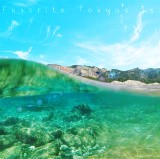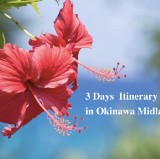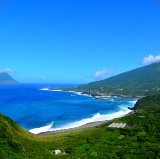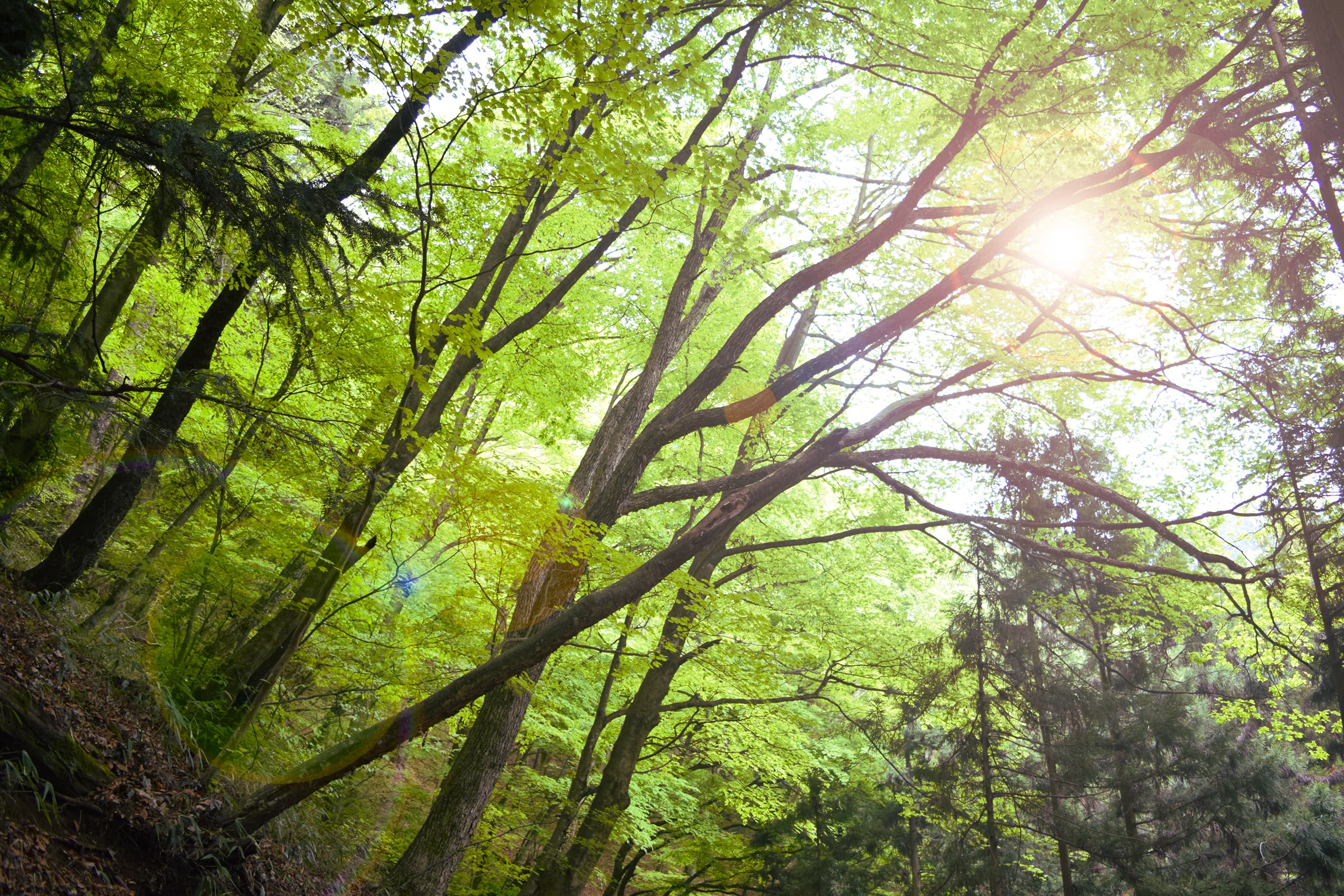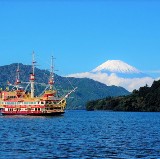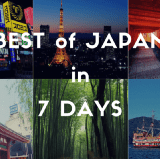Hachijojima Island Itinerary for 2 Days
Hachijojima Island: you can go within only 55 mins from Tokyo
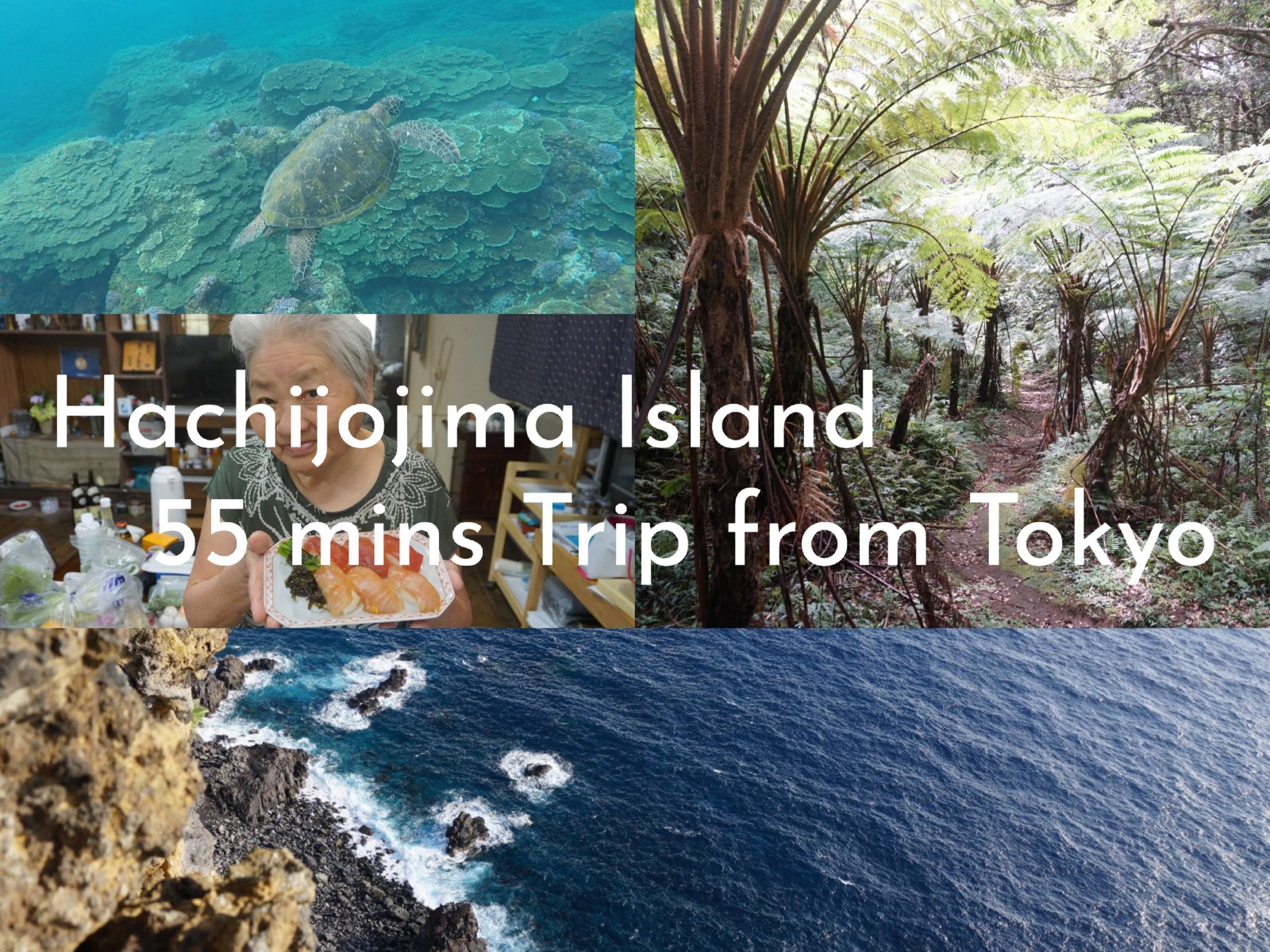
Hachijojima Island (八丈島) is perfect for taking a short trip from Tokyo. It takes only 55 mins to get to the volcanic island from Haneda Airport by flight. Extend your Tokyo trip to a subtropical island just 55 mins far from Tokyo!
I took a 2-day wonderful trip to a Tokyo’s volcanic island named Hachijojima Island. Hachijojima Island is one of the best remote islands accessible from Tokyo of the main island since it takes less than a hour to get there from Haneda Airport, Tokyo. The island has been getting popular among not only domestic but also international travelers across all age groups these days. It is just amazing for you to take a weekend trip to the resort island from the hustle-bustle metropolitan, isn’t it?
The Tokyo’s remote island, the second largest island of the Izu Islands, is gourd-shaped mainly consisting of two large volcanic mountains: Mt. Hachijo Fuji located in the west of the gourd and Mt.Mihara in the east. Kuroshio Current (Black Tide) flows around the island and it has the hot-humid climate. Due to the character of an island and the climate, there are numerous indigenous species of animals and natural monuments.
You may not be able to imagine how much you can do for 2 days in Hachijojima Island. I fully enjoyed the short-vacation trip with various things to do from swimming with sea turtles in the clear ocean to trekking in the jungle. Let me introduce the best 2 days itinerary in Hachijojima Island with my experiences.
*Please note that this article contains affiliate links.
Day 1
I chose the earliest flight from Haneda Airport (at 7:30) to spend more time of the arrival day in Hachijojima Island, so I took a shuttle bus to the airport and left Tokyo in the early morning. The flight arrived at Hachijojima Island within less than an hour.
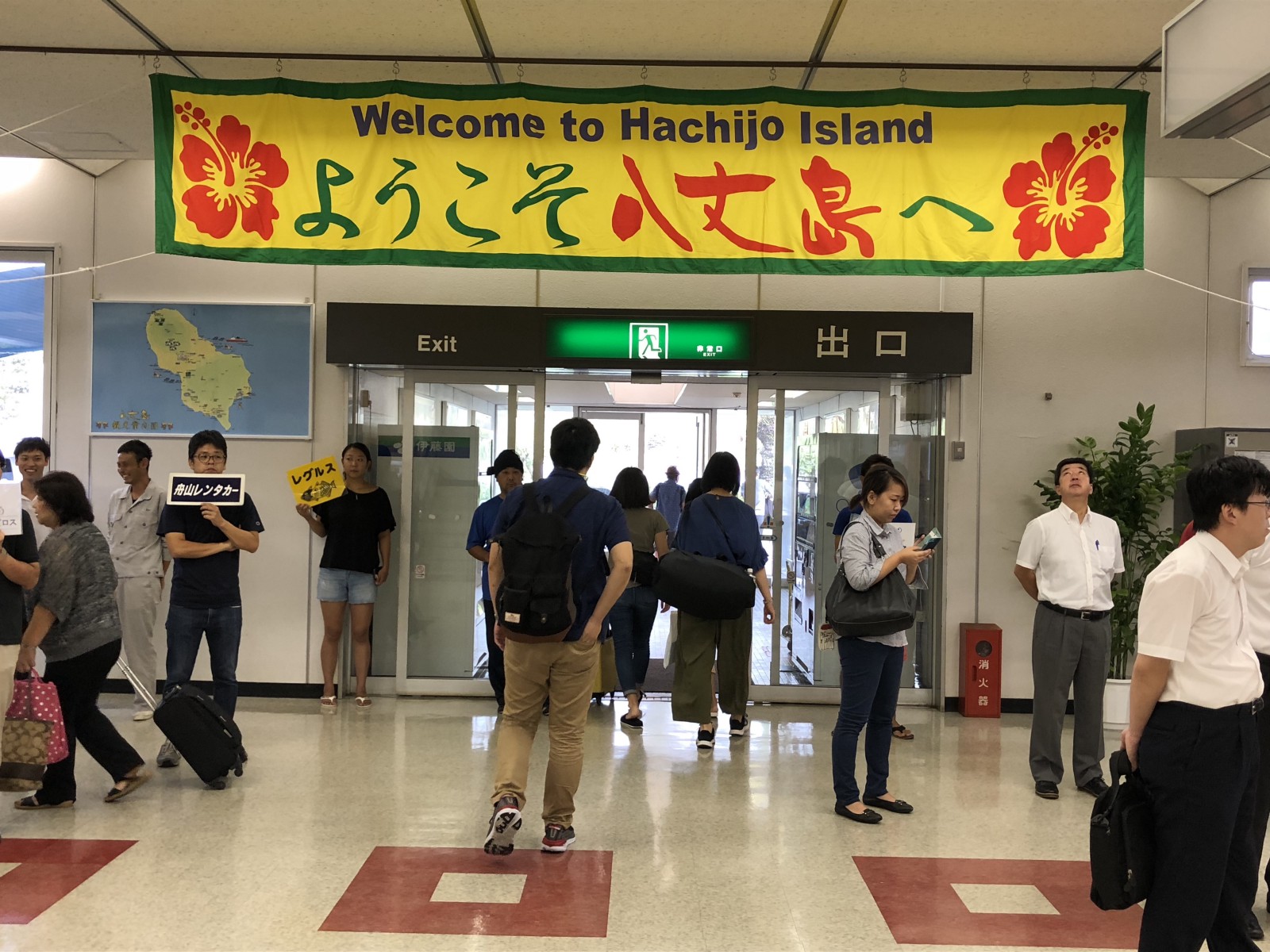
My itinerary was supposed to start with the volcano hiking to Mt. Hachijo Fuji, the highest mountain in the island. Unfortunately, due to the climate condition after the terrible typhoon just passes, the hiking tour had to be canceled. The kind guide took me to other nice spots to hike and take beautiful pictures instead, however, you should put the tour to the top of Mt. Hachijo Fuji in your bucket list. I heard that you could see the amazing panoramic views as if you were in the Japanese anime world. You will also drop by a farm with a breathtaking observatory on the way to the mountain. Look at the picture of the Mt. Hachijo Fuji hiking tour below.
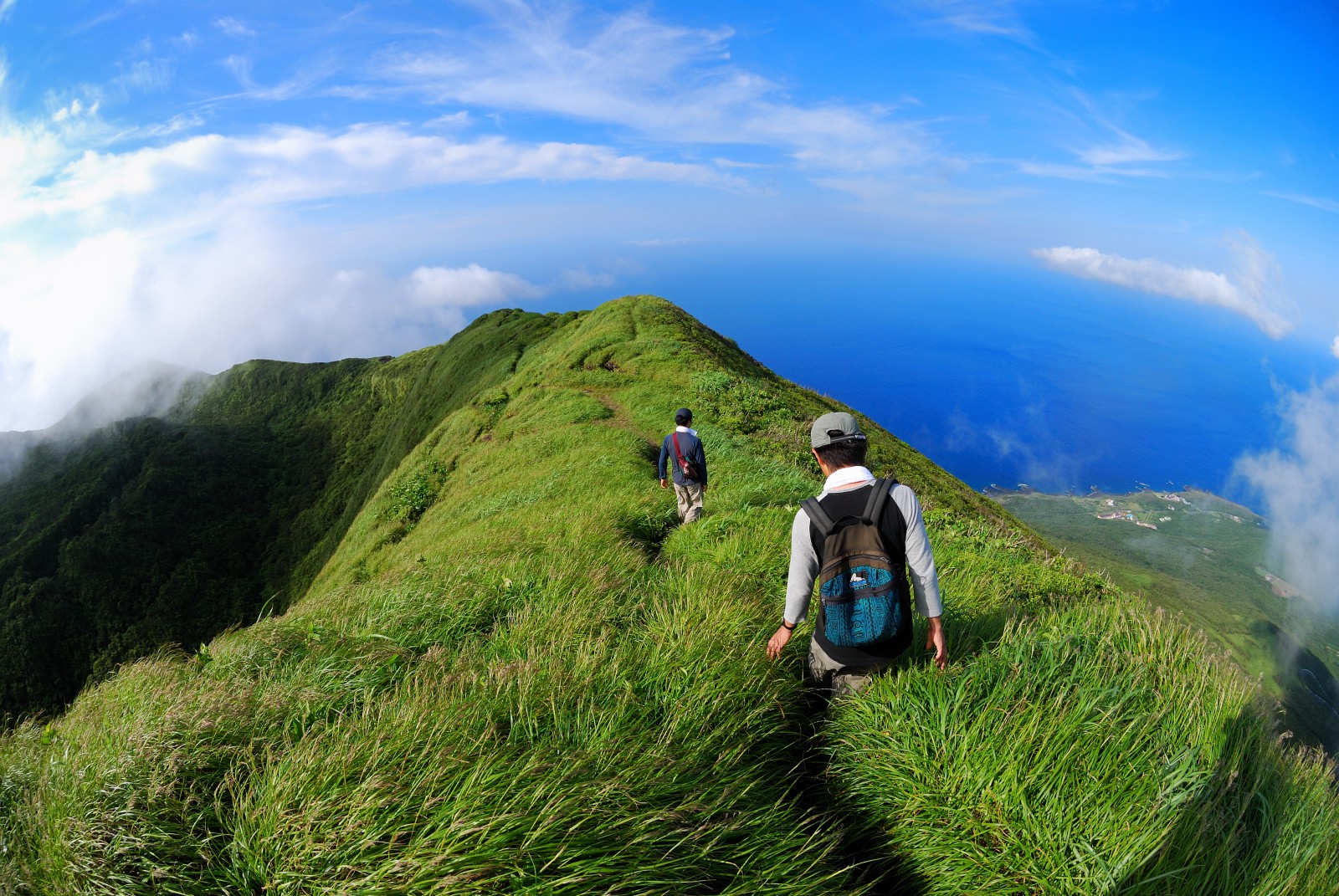
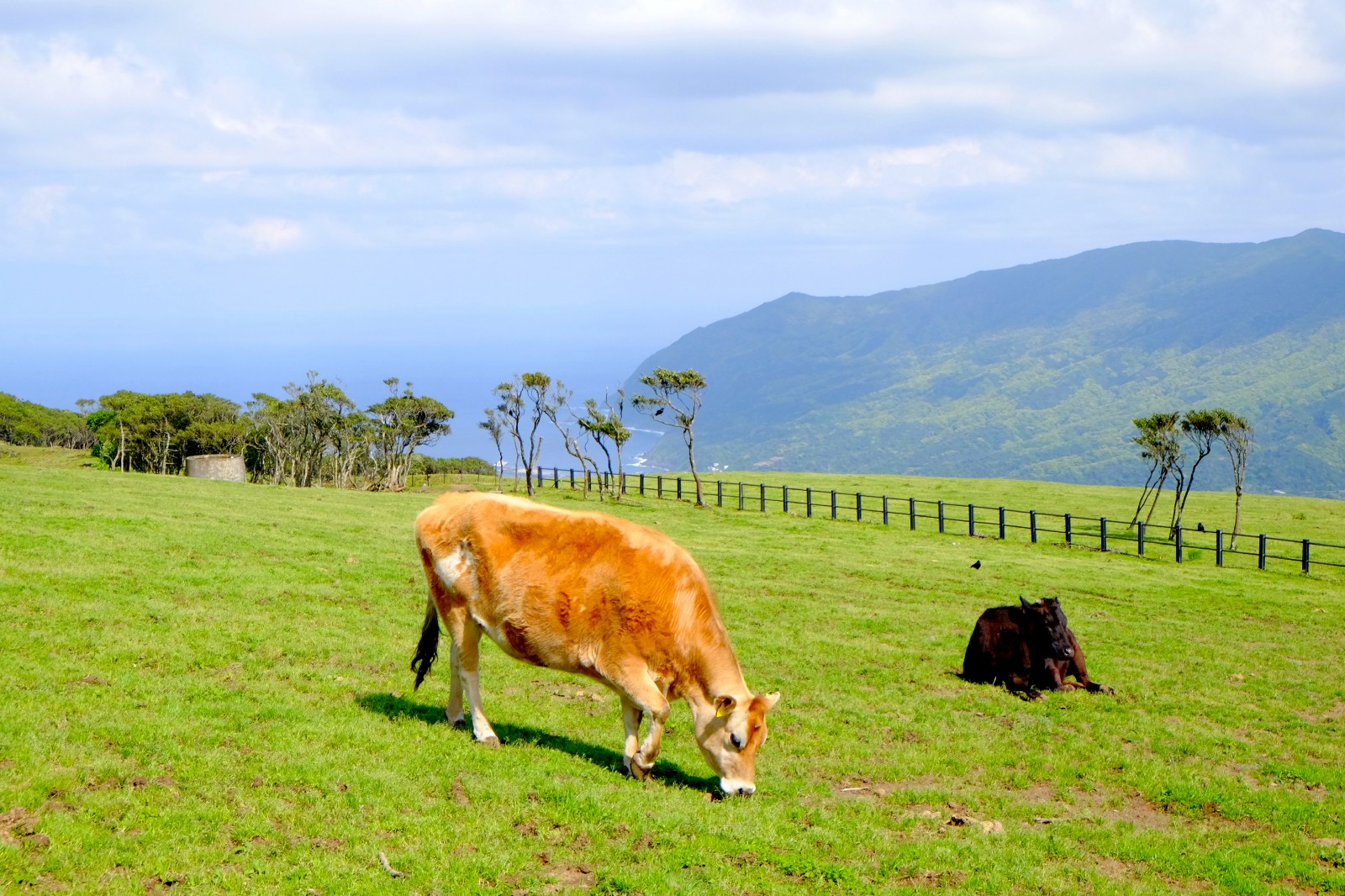
At first, I visited Tamaishigaki (玉石垣) area which is a good photo spot with Hachijojima Island’s traditional stone walls. The stone walls were built for the people of high position as a sacred symbol. During the Azuchi–Momoyama period, some clans of warriors who lost a war were banished from their home in the main island to Hachijojima Island. A powerful warrior Hideie Ukita (宇喜多秀家), one of the council of Five Elders appointed by Toyotomi Hideyoshi, was exiled to the island with his subordinates after losing in the Battle of Sekigahara. The subordinates built the stone walls around the sites of his house, which consist of numerous smoothly round stones.
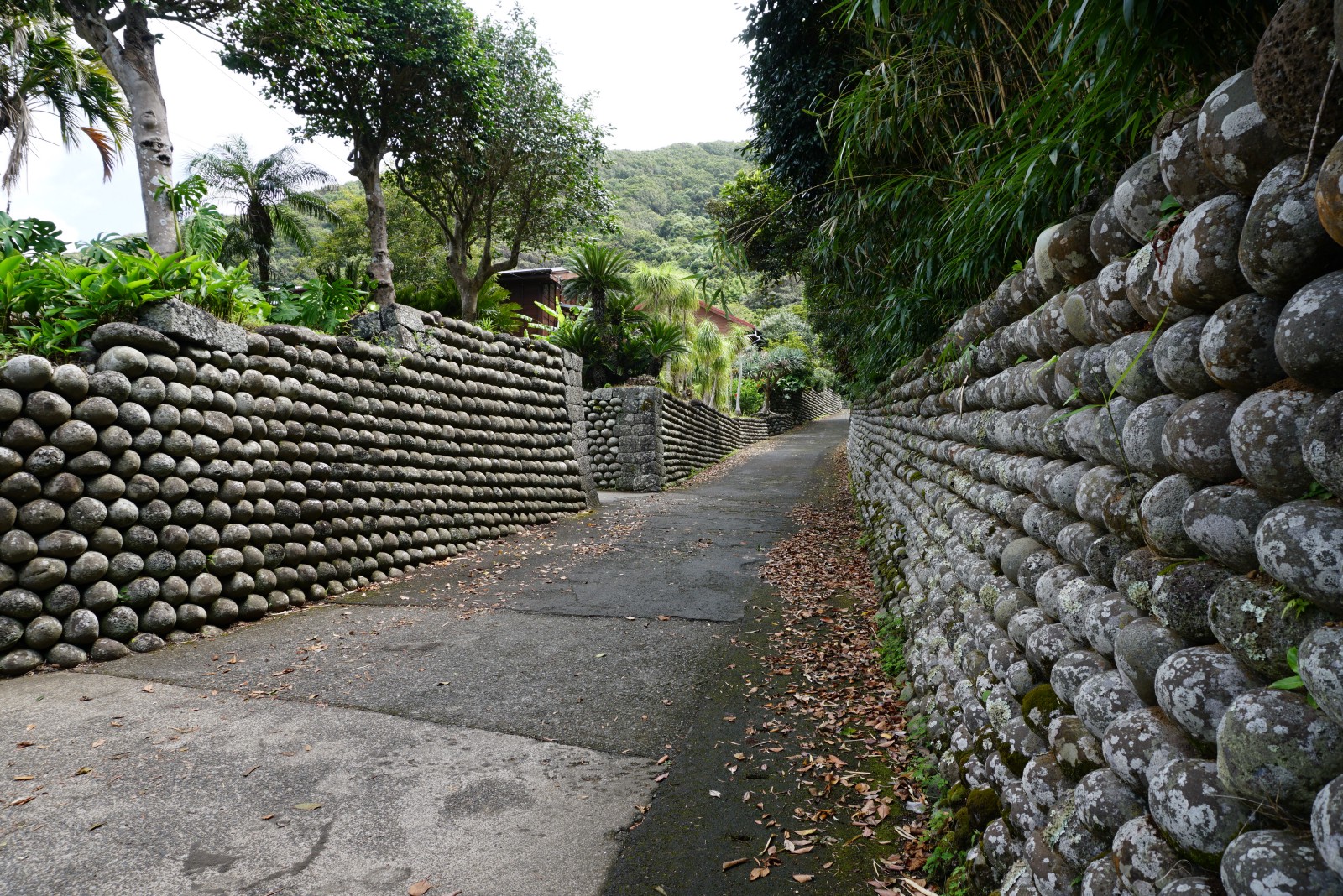
After shooting some nice photos there, I headed to Yokomagaura Coast (横間ヶ浦) where the round stones would have been collected for the stone walls. You can enjoy BBQ on the coast with the view of Hachijo-kojima Island (Mini Hachijojima) that is located 7.5 kilometers west of Hachijojima Island.
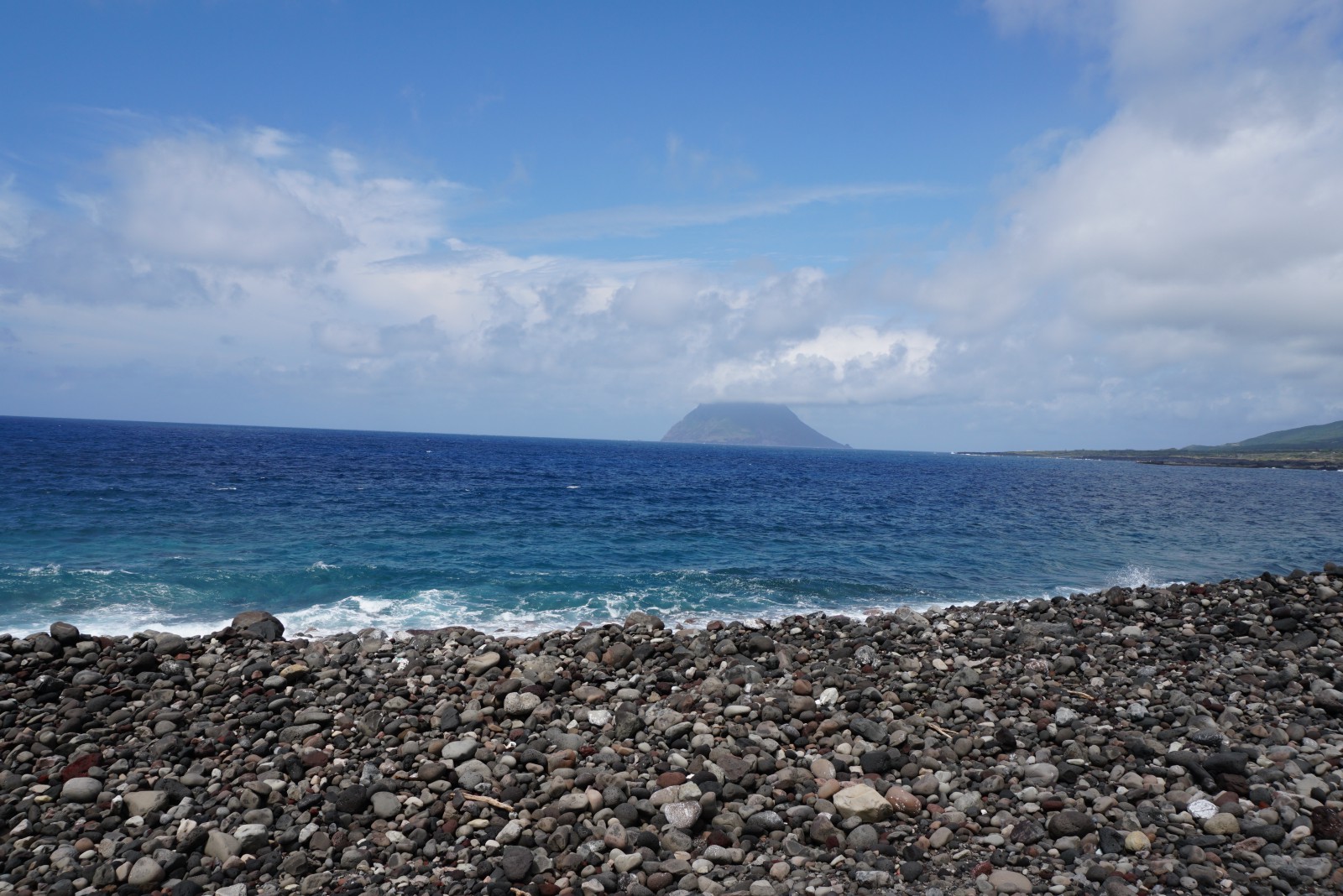
I went north to Nambara-senjojiki Coast (南原千畳敷海岸) which has no round stones like Yokomagaura Coast though both of the coast are not far from each other. Instead, the coast consists of lava that flew down due to the eruption of Mt. Hachijo Fuji in 1605. The vast lava is getting eroded by the roaring waves. Nambara-senjojiki Coast is also a good sunset viewing spot!
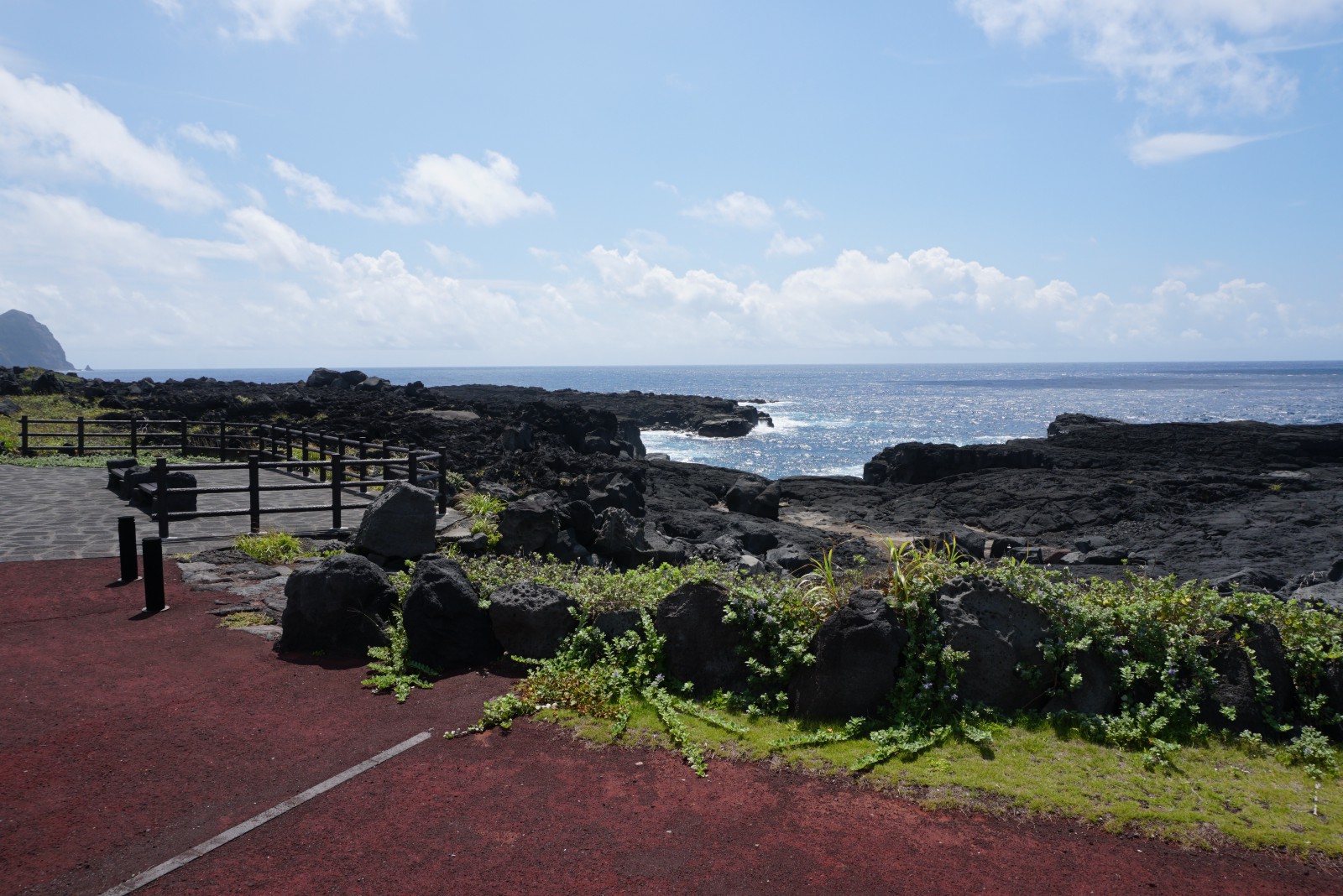
Snorkeling was set in my itinerary as the first things to do in the afternoon, and a staff of the snorkeling tour scheduled to pick me up at my hotel. I went picking up my rent-a-car near the airport for getting to the hotel. You can hire a car for around 3,000–4,000 yen per day. It was really reasonable and easy to drive in the island for much less traffic than Tokyo. For freely moving around the island without any concern for time tables of public transportation like bus (there is only one bus an hour).
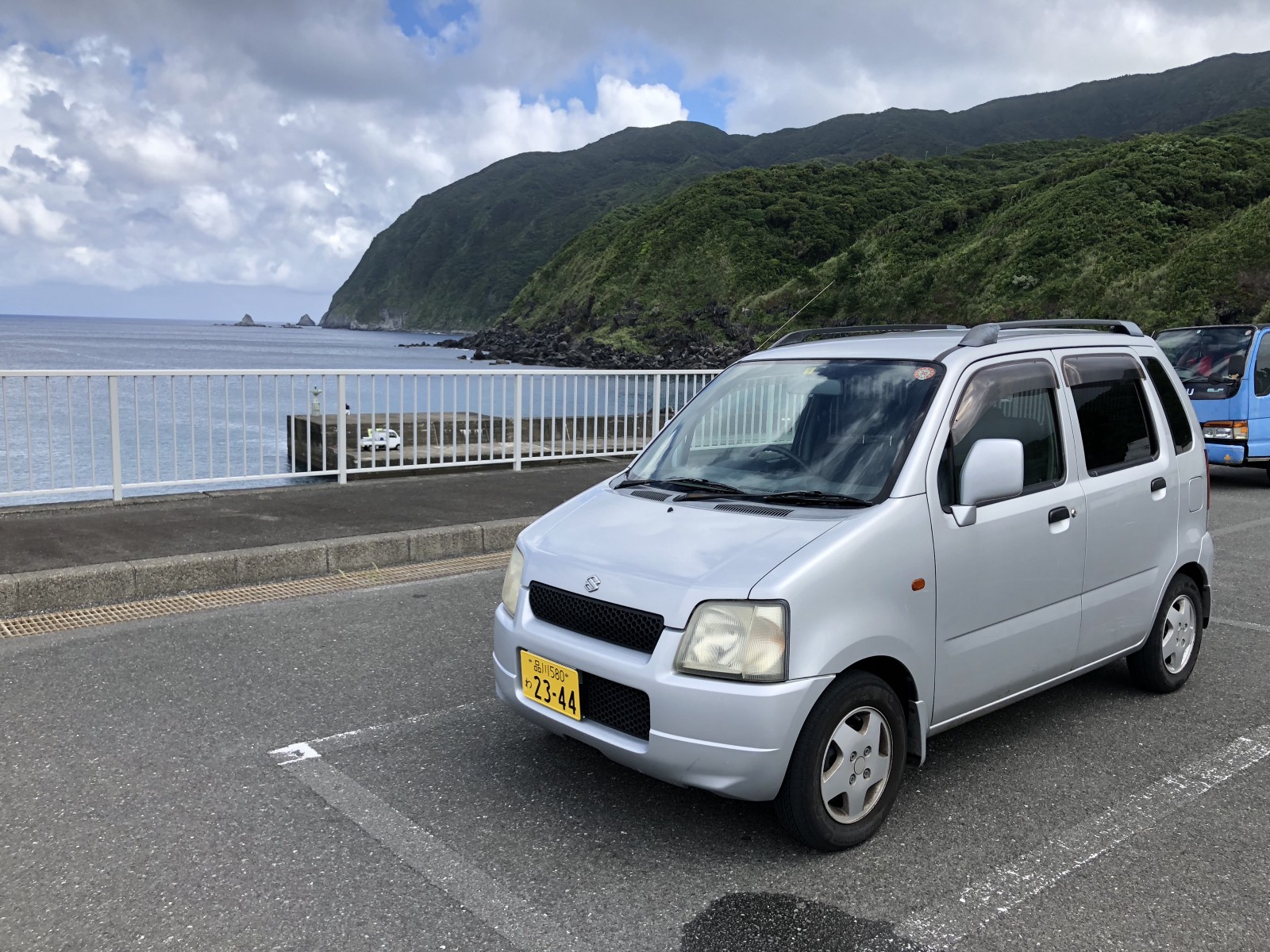
The guide of Mt. Hachijo Fuji hiking tour gave me a recommended quick food option: shopping Shimazushi (島寿司) lunch box at a grocery supermarket. I did not have much time for lunch at restaurants. That’s why I followed his suggestion and dropped by the grocery store on the way to the hotel. The Shimazushi sold at that kind of stores tasted much better than I expected (honestly, I like it better than the sushi served at some cheap restaurants in Tokyo).
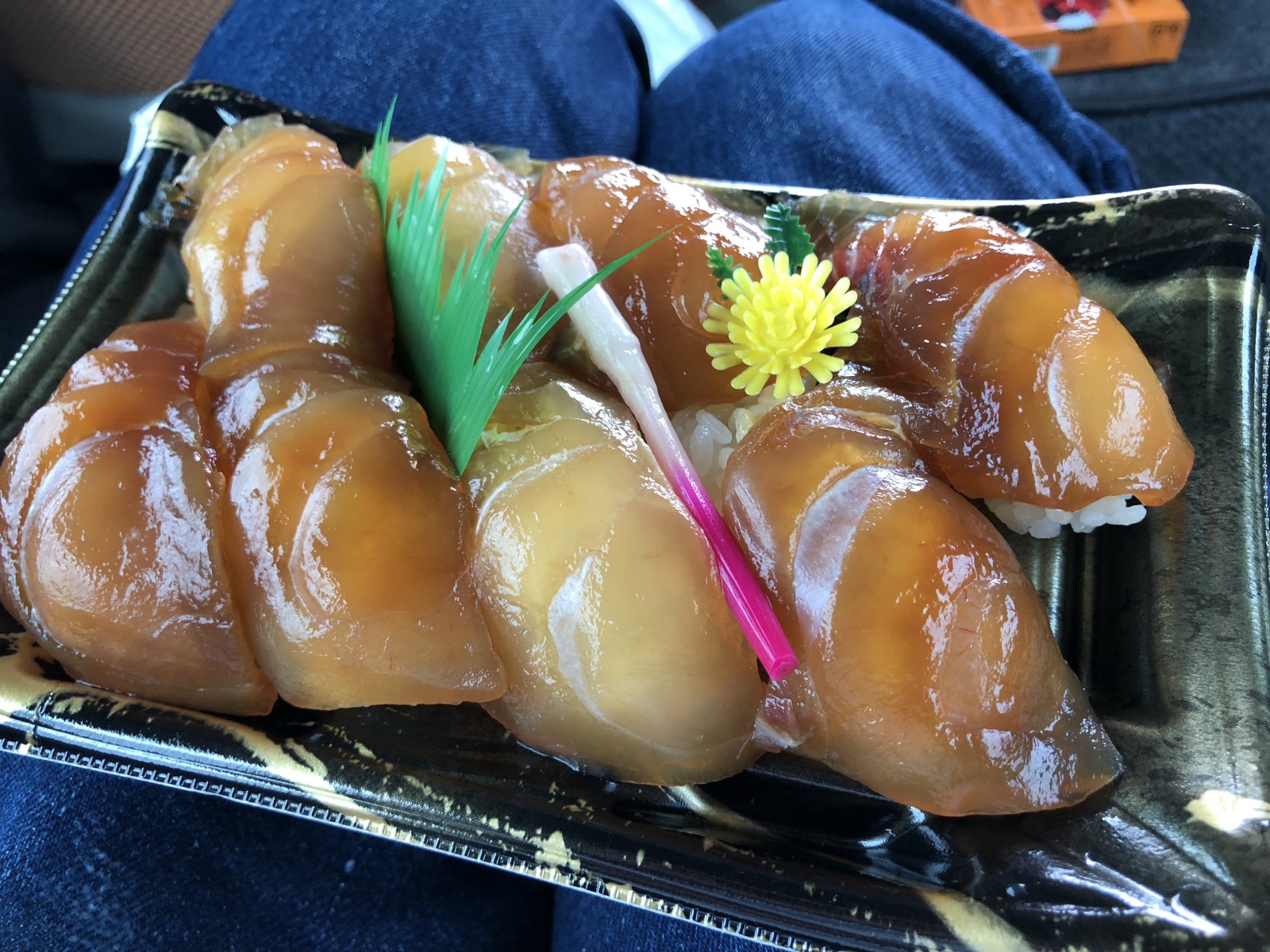
I checked in at the hotel and dropped off my luggage there. The snorkeling tour picked me up there and took me to Sokodo Beach (底土海水浴場) which is one of the best snorkeling spots in the island. Firstly, we a small group including 3 guests put on a wet suit and had a briefing from the snorkeling guide. And then, I jumped into the sea and found out the Hachijo-blue sea (the color of the sea around Hachijojima is called “Hachijo-blue”) was beautifully blue and I could see clearly the bottom. Actually, I wondered if the sea became a little cloudy due to the typhoon a few days ago. However, it was much easy to view fish, coral and even the main target of the tour: sea turtles. I saw not only a turtle but multiple ones at the same time. You can never see them in the main island just like that. It is just amazing to swim with sea turtles up close, right?
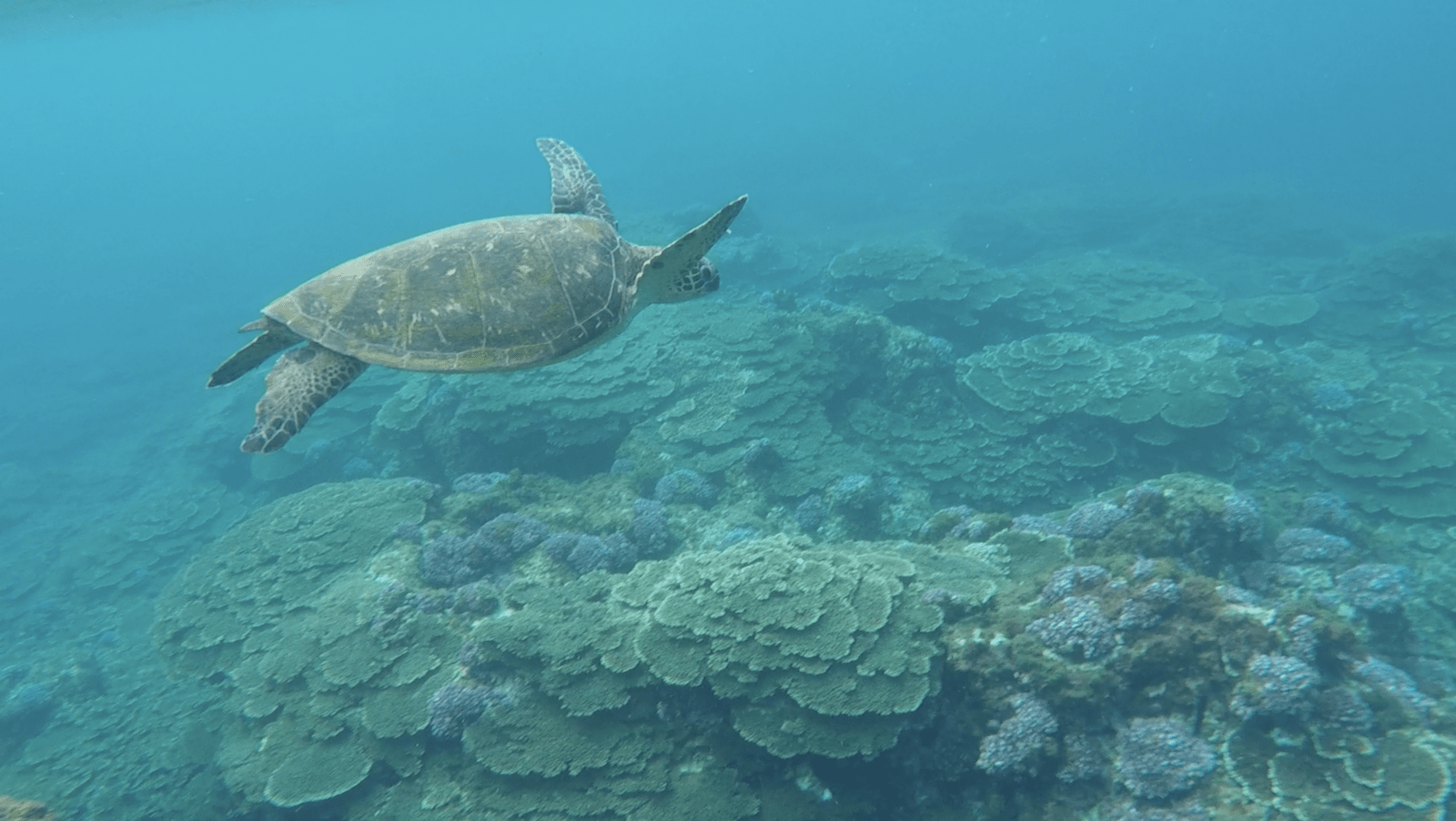
Hachijojima Island also offers the other sea activity: diving with sea turtle. For advanced divers, There is also a special program with a skilled photographer for advanced divers who want to see rare fish and take photos in the sea.
After the activity, I drove to some more tourist spots. The next one was a hidden gem Kurosuna Sand Dunes (黒砂砂丘) which is not rarely visited by tourists. It takes 30–60 mins to hike to the top of the sand dunes, however, you can see the amazing coastline. Kurosuna means “black sand”, which consists of shattered tiny lavas. The bluff of the dunes is collapsing owing to typhoons and heavy rains. These several years may be the last chance to view the beautiful coastline from Kurosuna Sand Dunes.
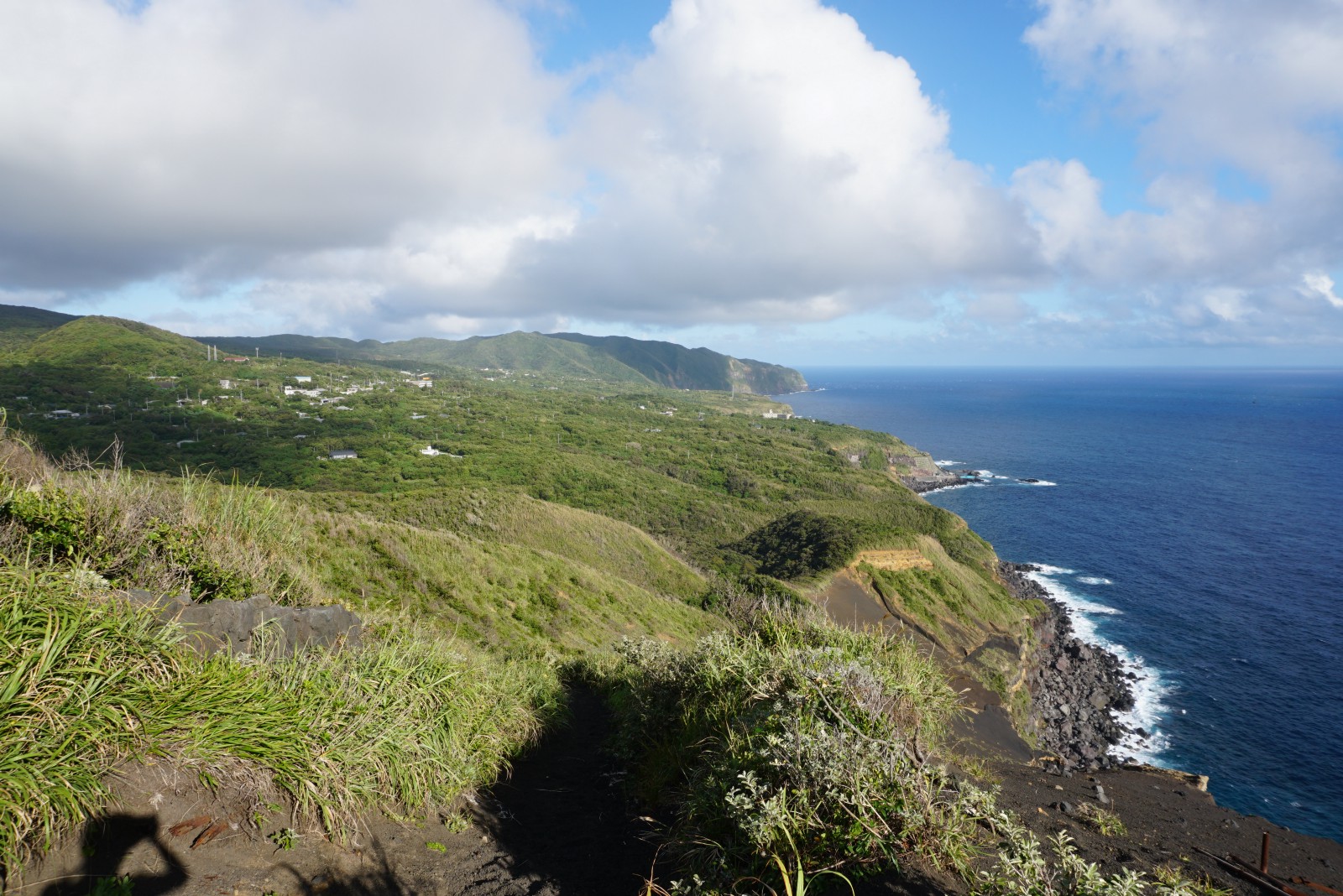
My next destination was a natural hot spring named Miharashi-no-Yu Hot Spring (みはらしの湯), located in the far east of the island. This was a perfect choice since I got sweaty after trekking on the sand dunes. Hachijojima Island is also known as a hot spring town, and it has seven hot springs. Miharashi-no-Yu Hot Spring houses outdoor hot spring bathes where you can view the panoramic scenery of the sea and mountains. Can you believe that there are chances to experience Japanese traditional hot springs in the resort island?
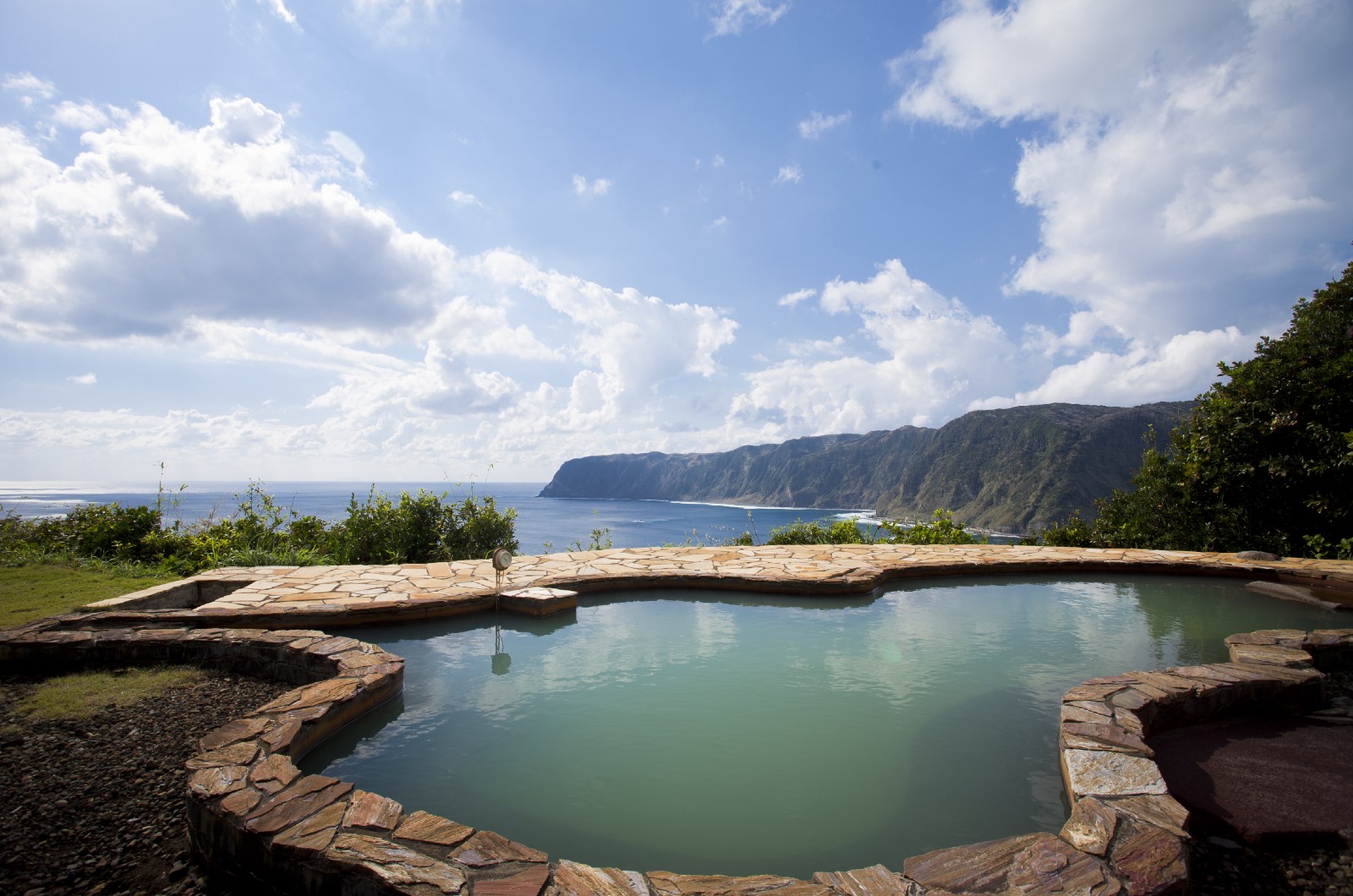
Drawing the sunset time (around 6 PM in the early September), I was heading to Osaka Tunnel Observatory (大坂トンネル展望台), which is known as one of the best sunset viewing spots. Due to the cloudy condition, I could just see the sky with glow of the dim orange sunset. The view with the sunset and the Mini Hachijojima is fantastic when weather permits like below.
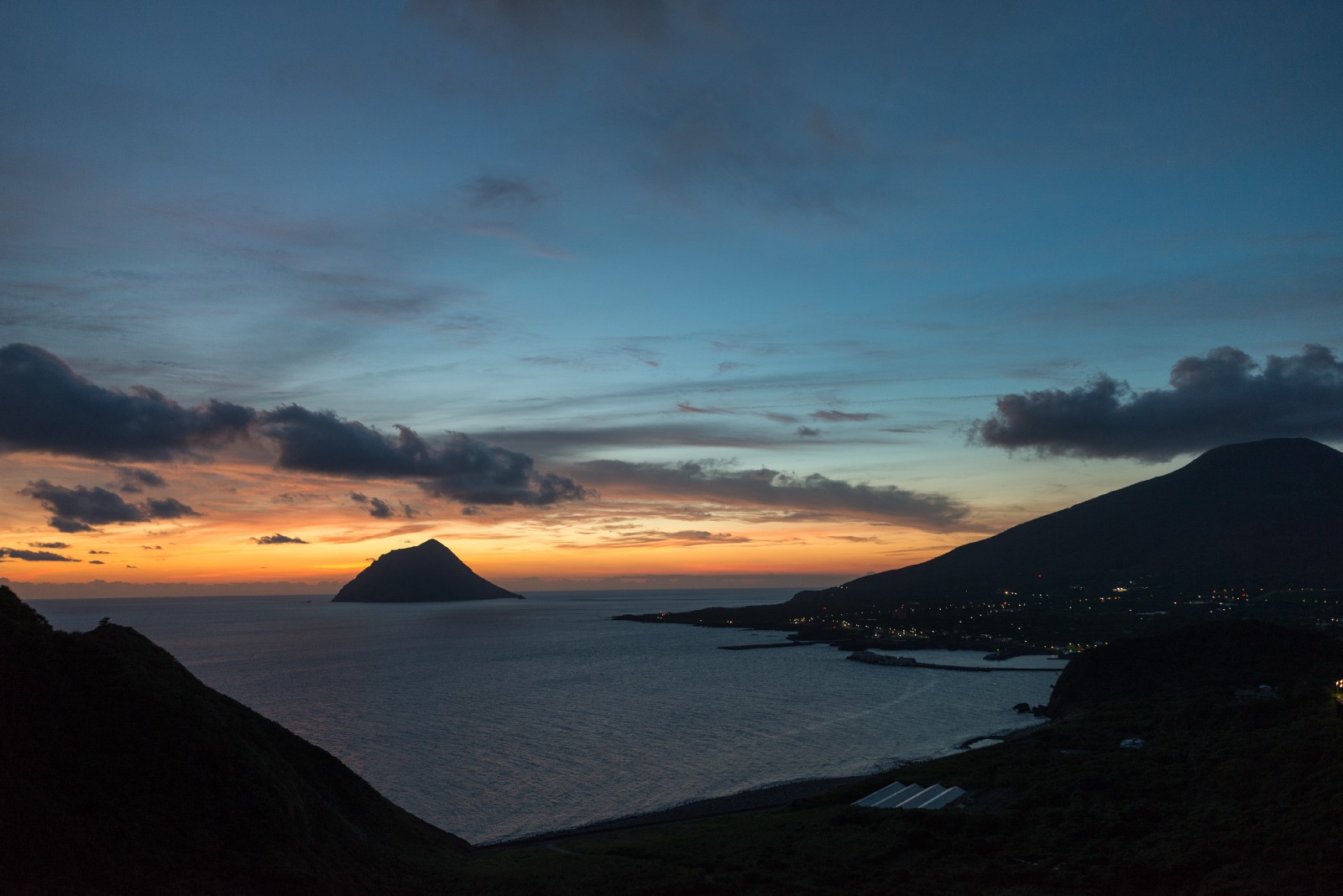
The climax of the first day on my trip was dining at a local restaurant Daikichimaru (大吉丸) that was recommended by some local people. It offered various regional food including Ashitaba (a kind of angelica)/あしたば, fish skewers/めかじきのやきとり, boiled taros with Shuto (made by pickling the entrails of bonito)/里芋と酒盗 and so on. They perfectly went well with beers and the regional drinks Shima-shochu (島焼酎). Of course, Daikichimaru serves well-known regional dishes like Shimazushi (島寿司) and Kusaya (くさや), but here is the introduction of less known recommended ones that are not introduced on guidebooks.
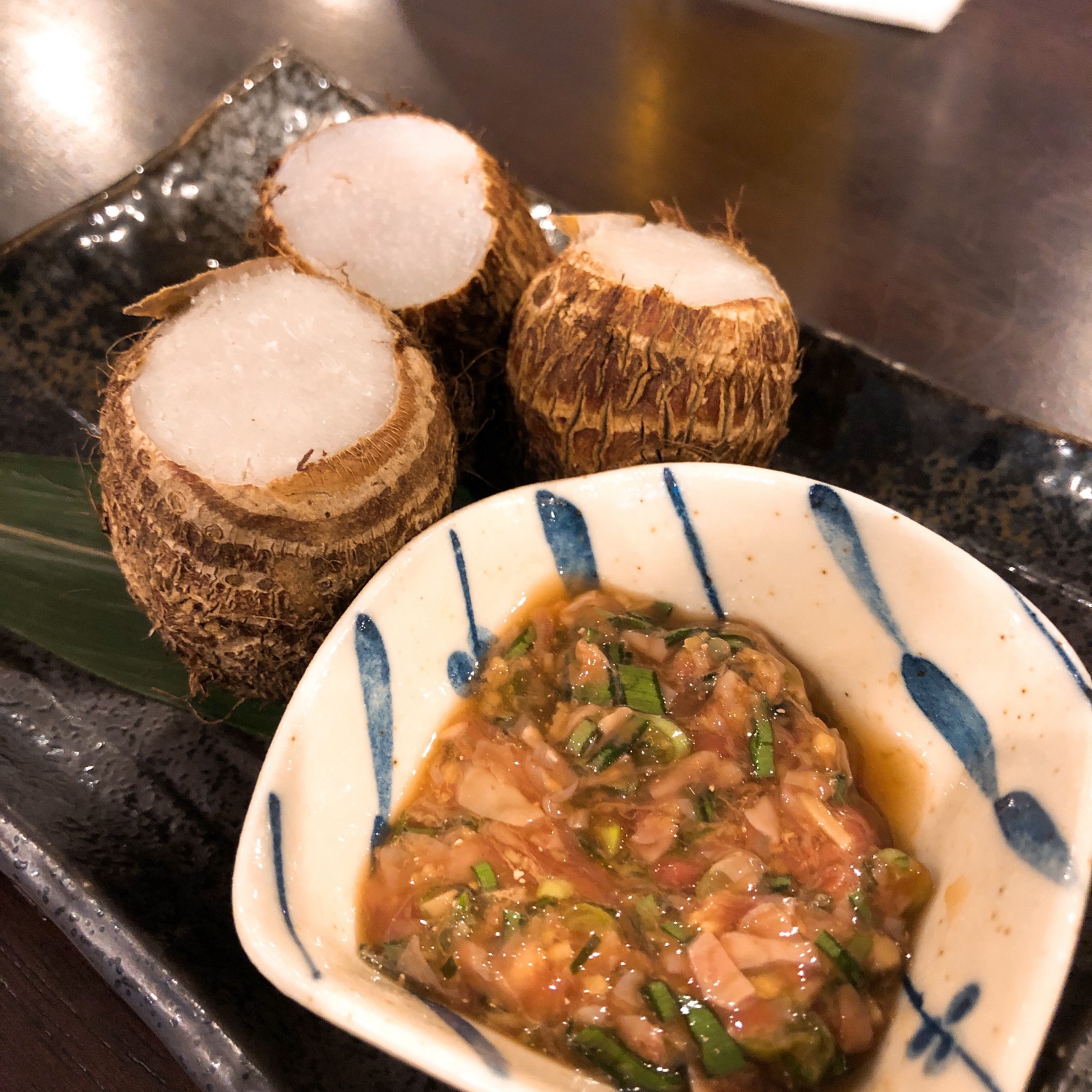
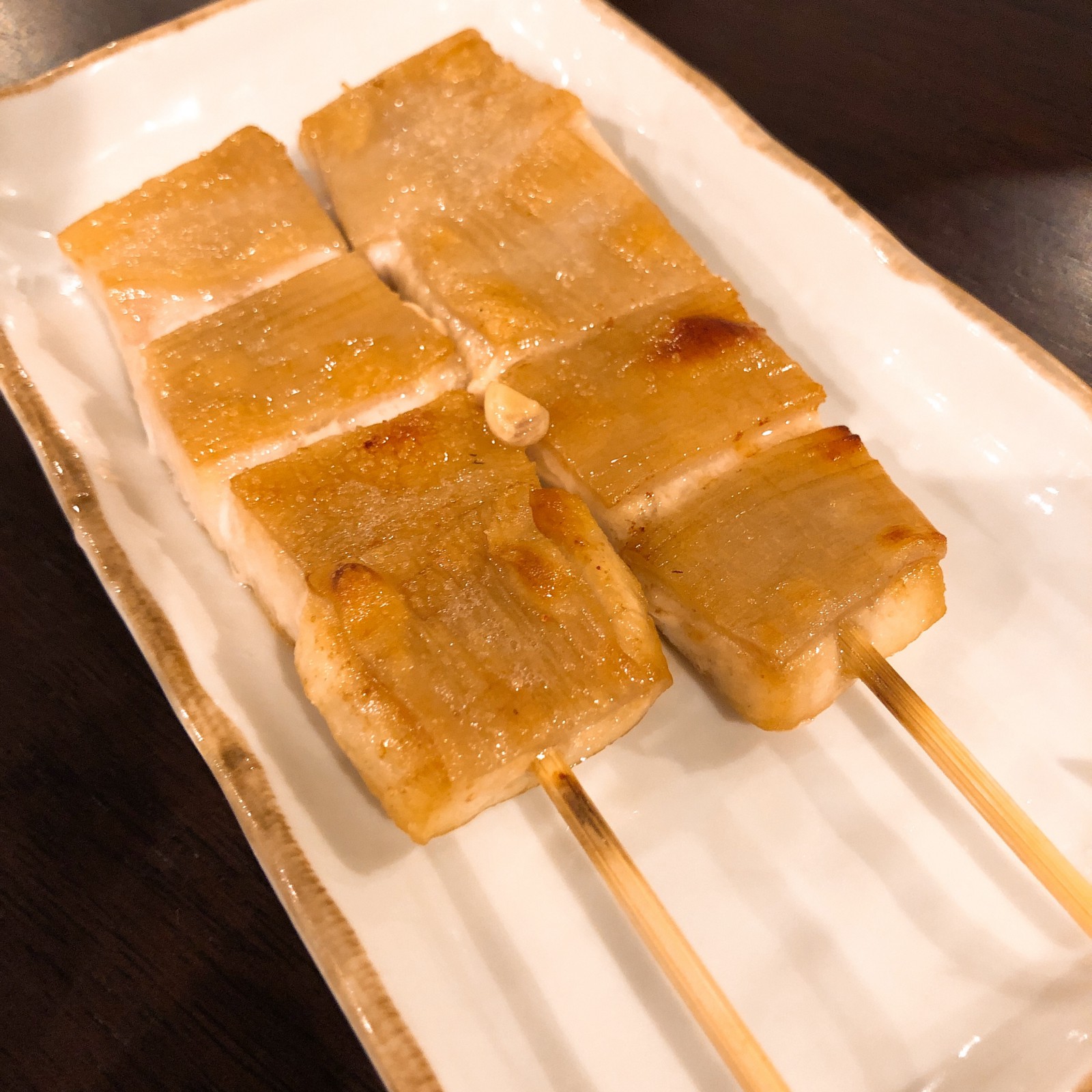
Additionally, let me introduce one more Izakaya to enjoy dining. This is Ryozampaku (梁山泊) which is also one of the most popular restaurants for dinner in the island. I could not visit the restaurant this time since they were already fully occupied. It is strongly recommended to reserve in advance. Here are these two restaurants’ website links. Make a reservation by phone call or ask someone who can speak Japanese to call instead of you:
Daikichimaru: http://www.daikichimaru.com/
Ryozampaku: http://www.rzp.jp/
Finally, I went back to the guesthouse SEADIVE, located in front of the east beach Sokodo Beach. The guesthouse is run by kind and friendly staff and is really budget-friendly. Near the beach, stores, restaurants and the airport. You can book your hotel in English in this link below with a various price range.
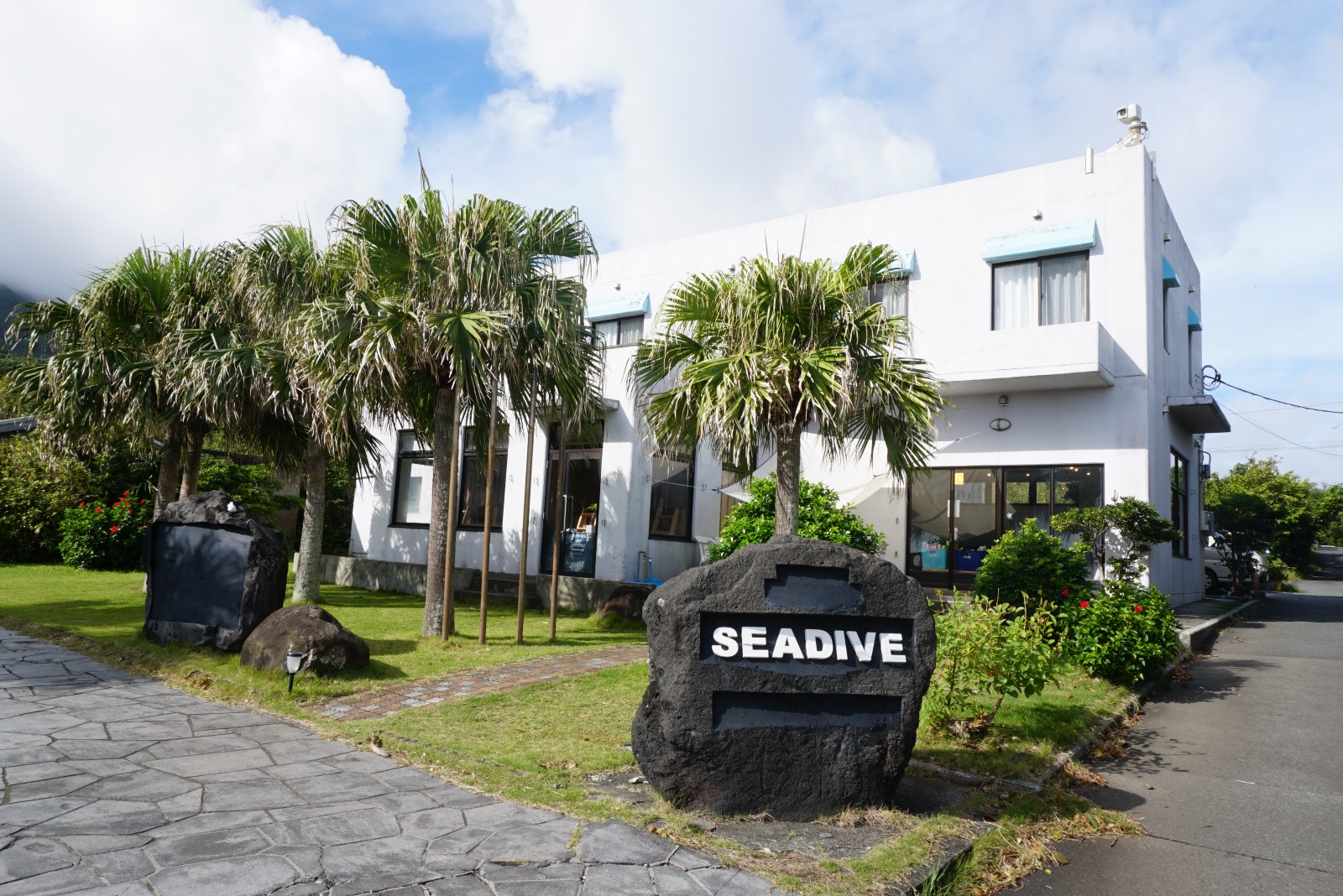
Day 2
My returning flight was the final one departing at 5:20 PM, so I had much time to enjoy traveling on the 2nd day. The day 2 of my itinerary on the Tokyo’s subtropical island started with trekking tour in the jungle. I drove to the meeting point of the tour and met a guide and the other group guest. The guide can speak English since they have lived in the United States.

We entered the jungle at the foot of Mt.Mihara (三原山), the second largest mountain in the island. There are various rare plants I have not seen ever before including a variety of ferns. The guide kindly explained about the jungle, plants and animals with rich knowledge in English. We found the red-stomach newt (Cynops pyrrhogaster) fortunately. For about 1.5–2 hours of the trekking tour, I felt as if we explored the forest in the Ghibli or Jurassic world. The trekking path is not hard to hike, so it is recommended for beginners of trekking. Please note that there are numerous mosquitos due to the humid climate and make sure to bring a mosquito repellent (I got bitten by mosquitos for many times). You can buy it at drug stores and grocery stores.

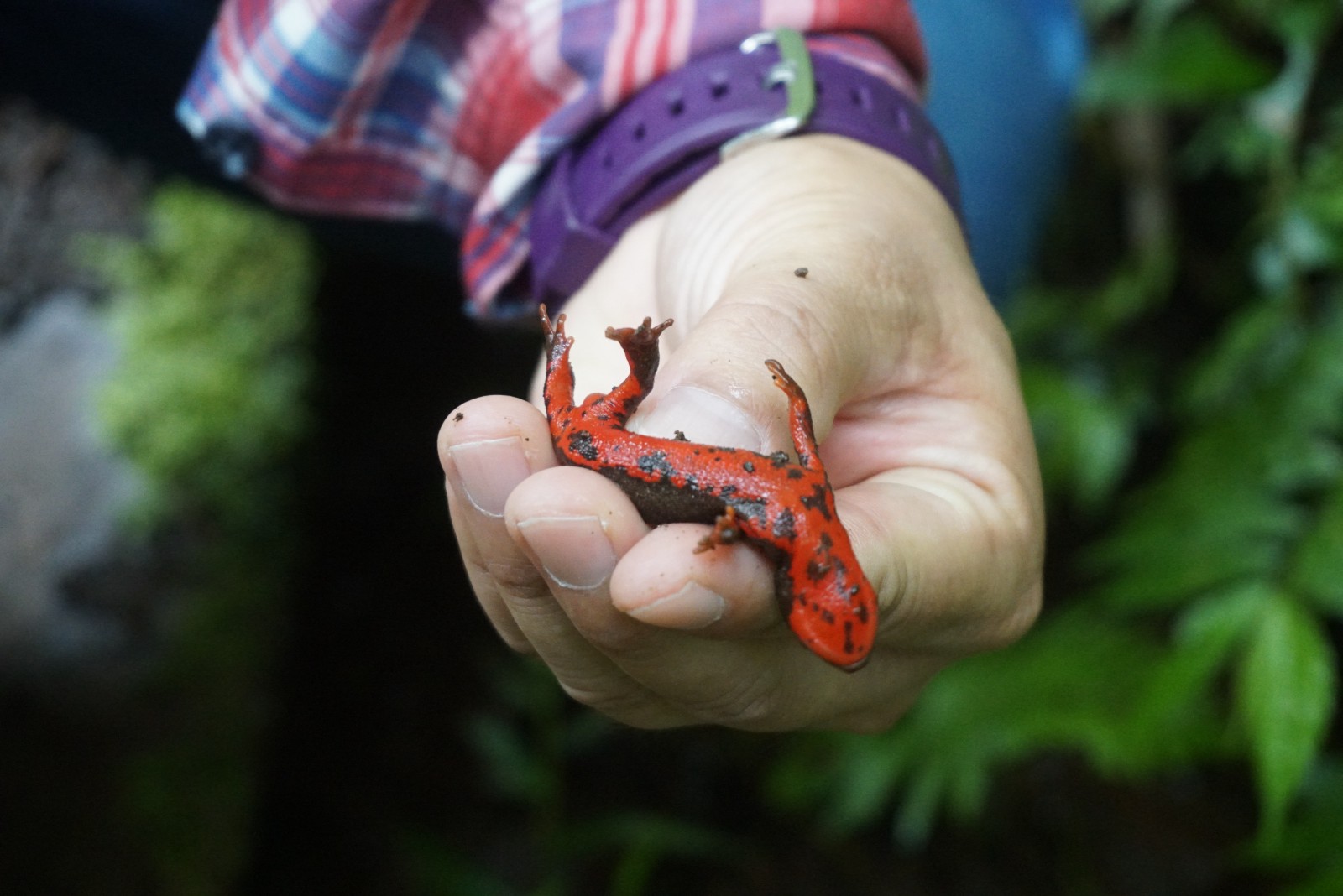
After the trekking tour, I visited Uramigataki Waterfall (裏見ヶ滝) in the different forest. The waterfall is not so big one, but you can reach and see the back side of it. It was so cool and mysterious.
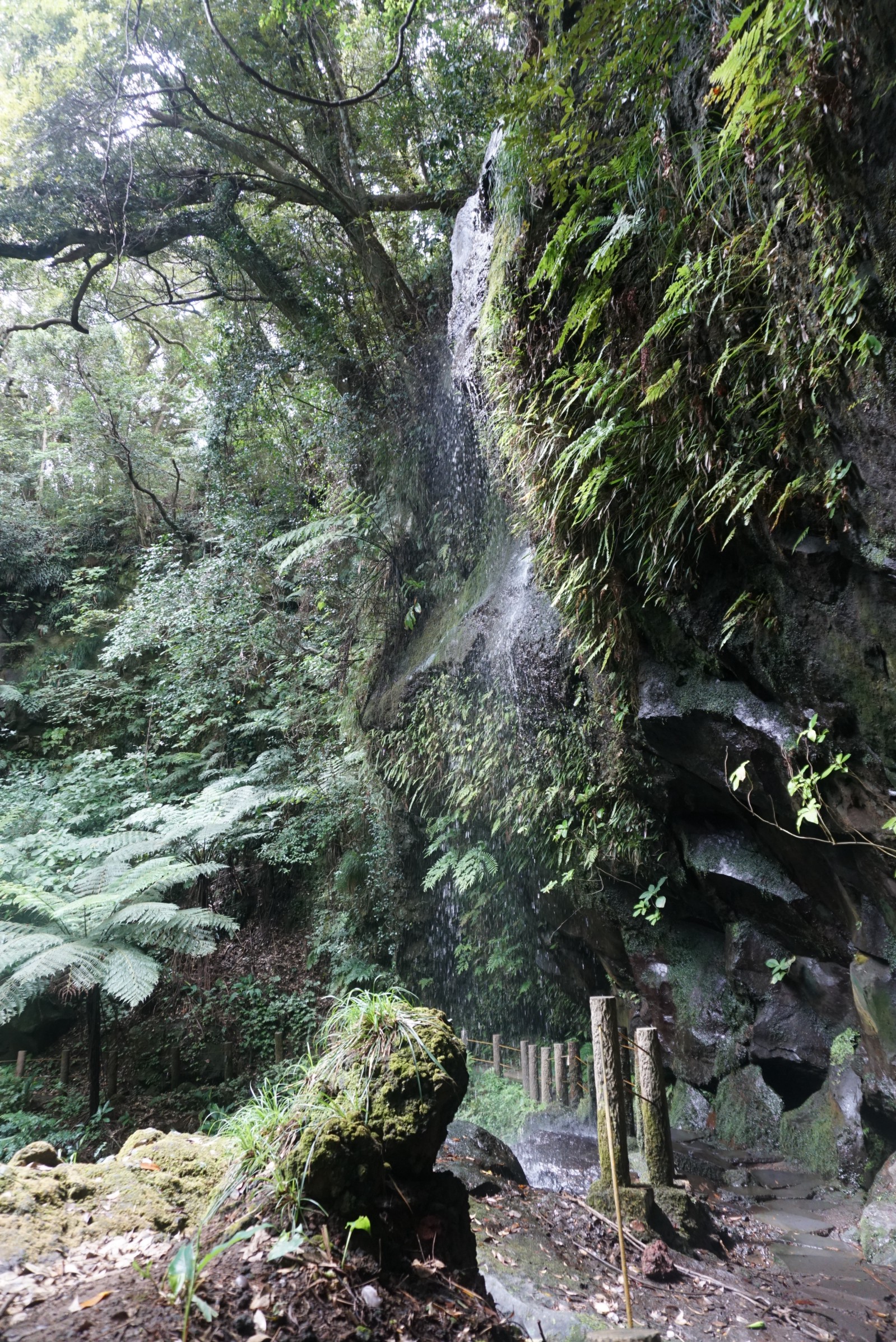

And then, I enjoyed soaking in the hot spring next to the waterfall named Uramigataki Onsen (裏見ヶ滝温泉). The outdoor hot spring bath is mixed for men and women, and you need to wear swimsuits. If you feel shy about soaking in public hot springs naked like Japanese, enjoy this spot like pools or beaches.
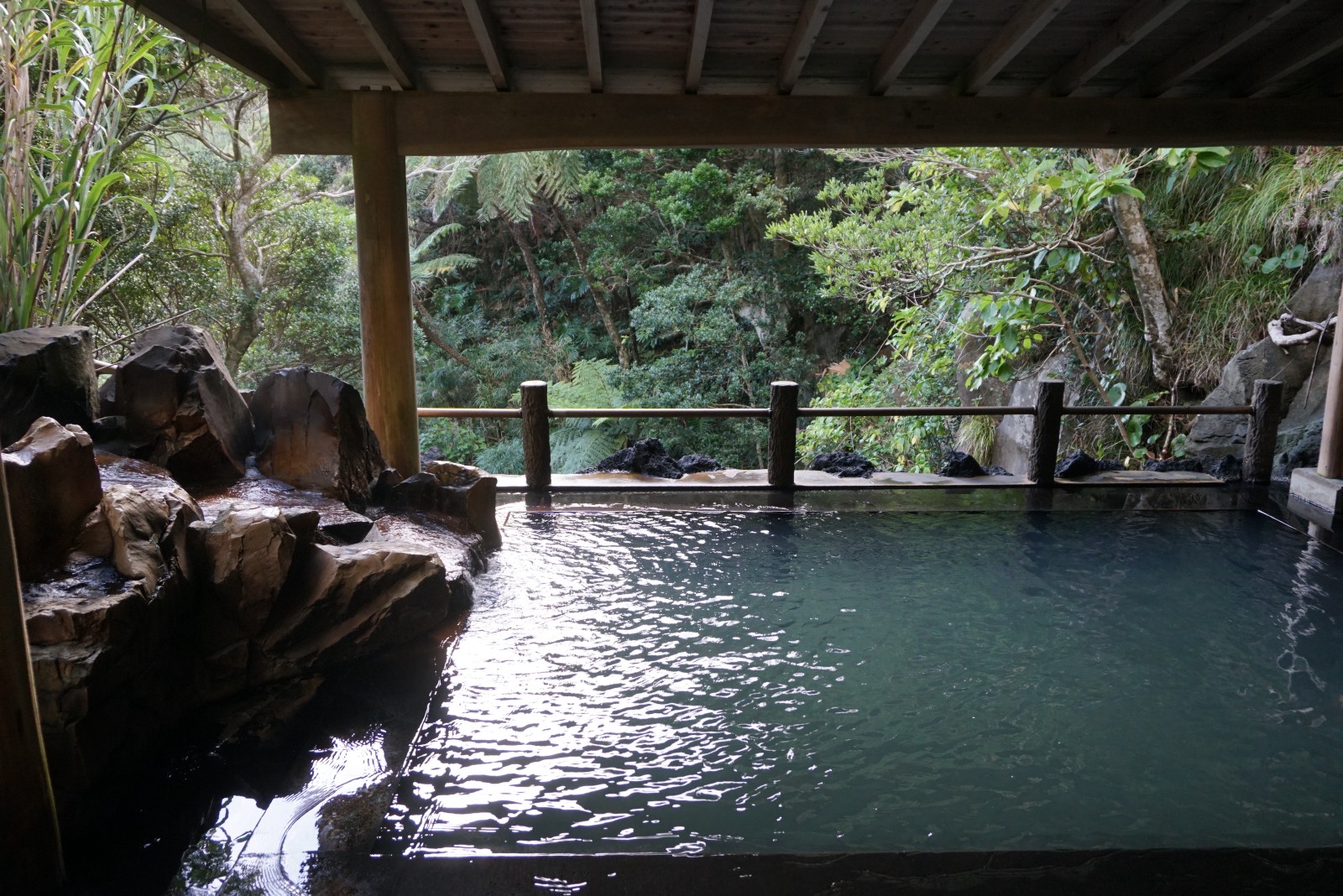
For lunch time, I experienced a Shimazushi cooking class in the same area as the trekking tour and the waterfall. Shimazushi is the best known regional food in Hachijojima and I was really interested in cooking it by myself. The cooking class is offered by the local celebrity Grandma Eiko who is called “Eikoba”. Eikoba has run her guest house “Garden-so (ガーデン荘)” for over 50 years and has started offering the cooking class these days.
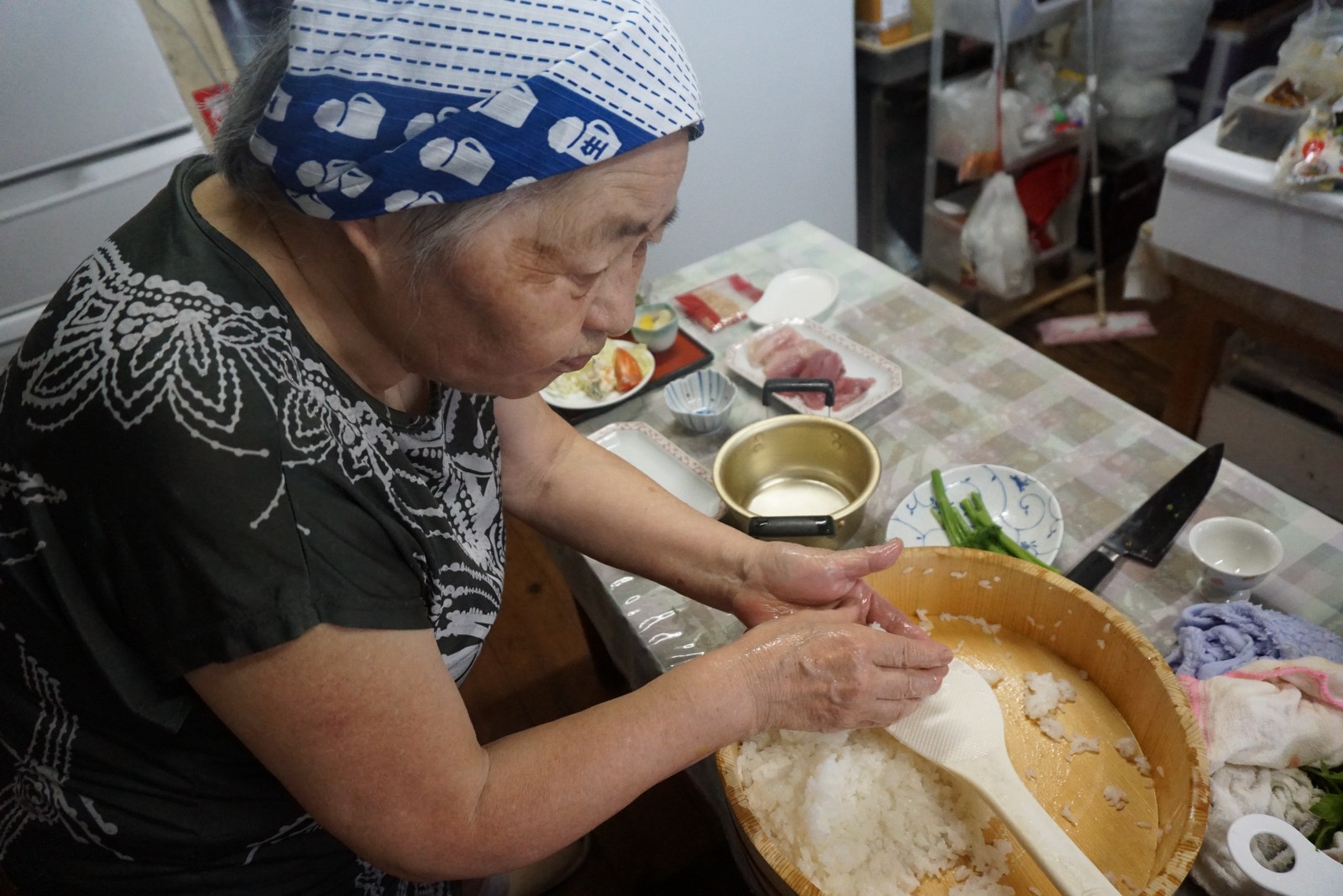
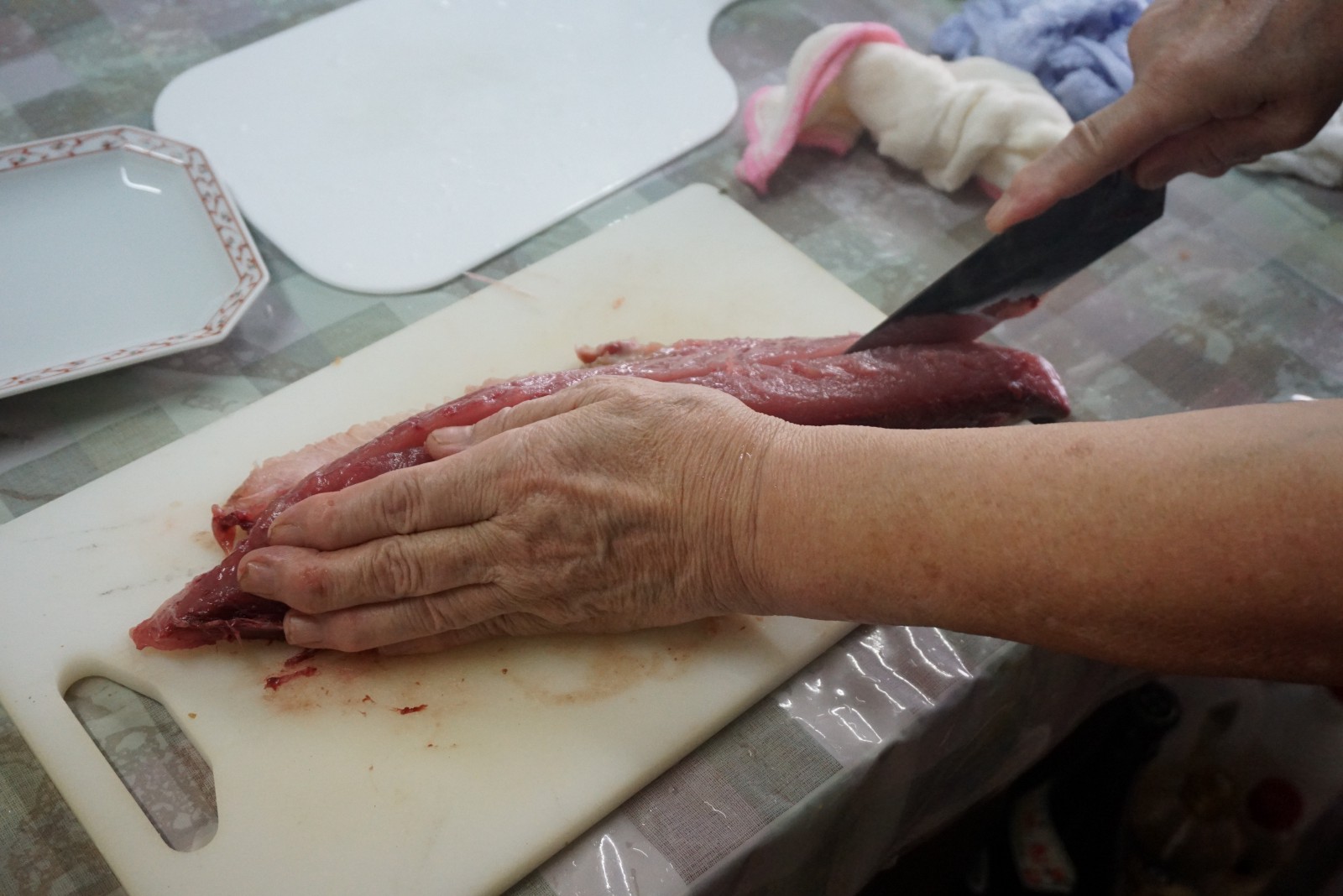
I was not good at cooking and was wondering if I could make nice Shimazushi, but no need to worry. Eikoba kindly instructed me how to from cut fish and season them with soy sauce to shape the sushi well. She offered two kinds of fish: red bream(キンメ) and yellowfin tuna (キハダマグロ). We added two more regional ingredients on our dishes: boiled laver seaweed and Ashitaba (a kind of angelica). You cannot eat all of them in the main island of Japan.
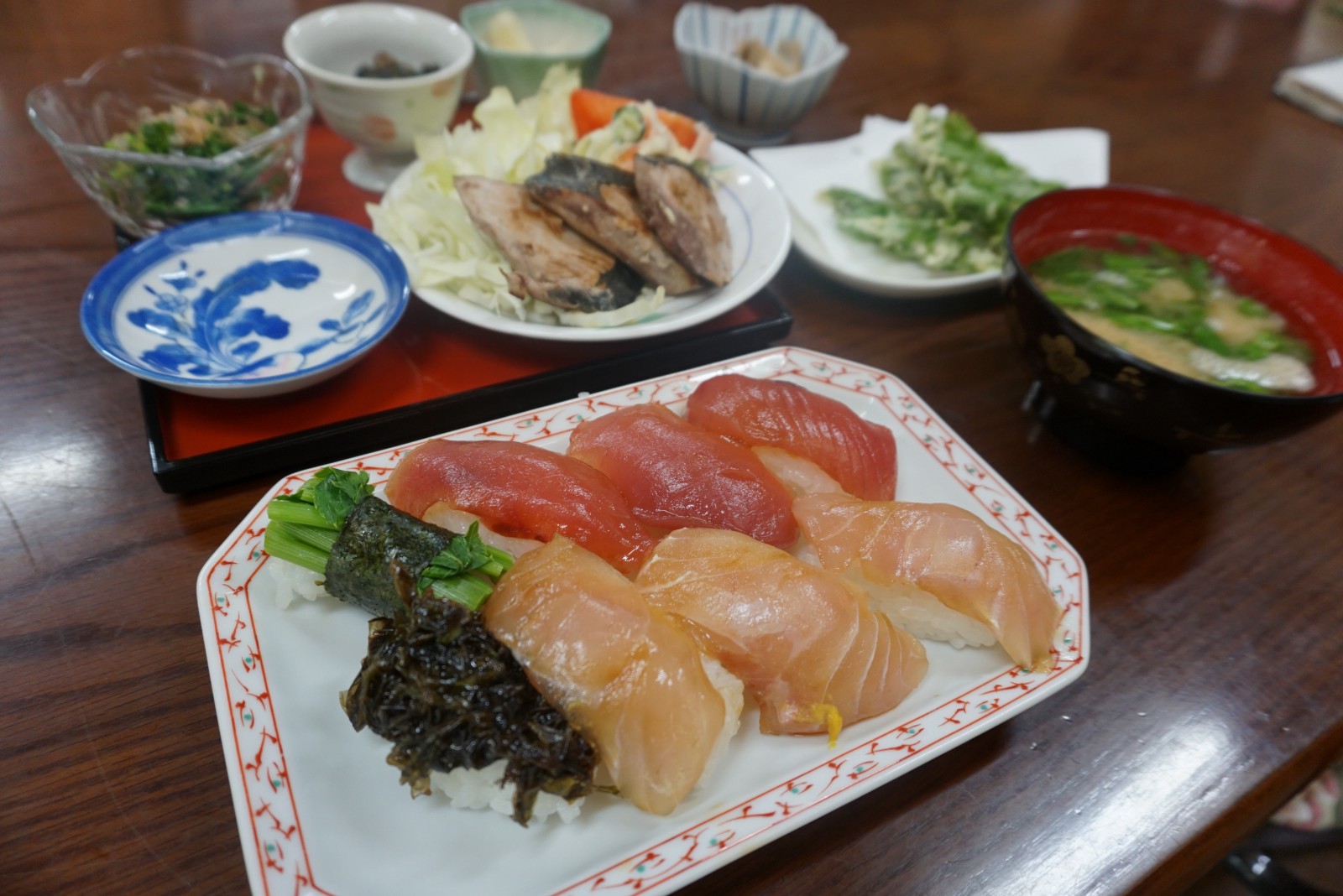
In addition to several pieces of Sushi, we cooked miso soup with Ahitaba, tempura of Ashitaba and fried bonitos. This is the authentic Japanese cooking class experience! Even if you cannot speak Japanese, Eikoba is quite friendly , off course to foreign visitors.
All of the four attractions are highly recommended to take together in your itinerary since they are located at the very close points.
After the fantastic lunch experience, I visited three awesome observatories in the east of the island. The first one is Noboryo-Toge Observatory (登龍峠展望台) which it took 20–25 mins to get from Eikoba’s cooking class spot by car. Noboryo-Toge is the name of the mountain road around there which was named for the steep slope like dragon ascends to heaven. From the observatory, you can view the superb scenery of the town in the east with Mt. Hachijo Fuji and Mini Hachijojima if weather is good. (You may have already noticed that it was cloudy during my stay…but not worst!)
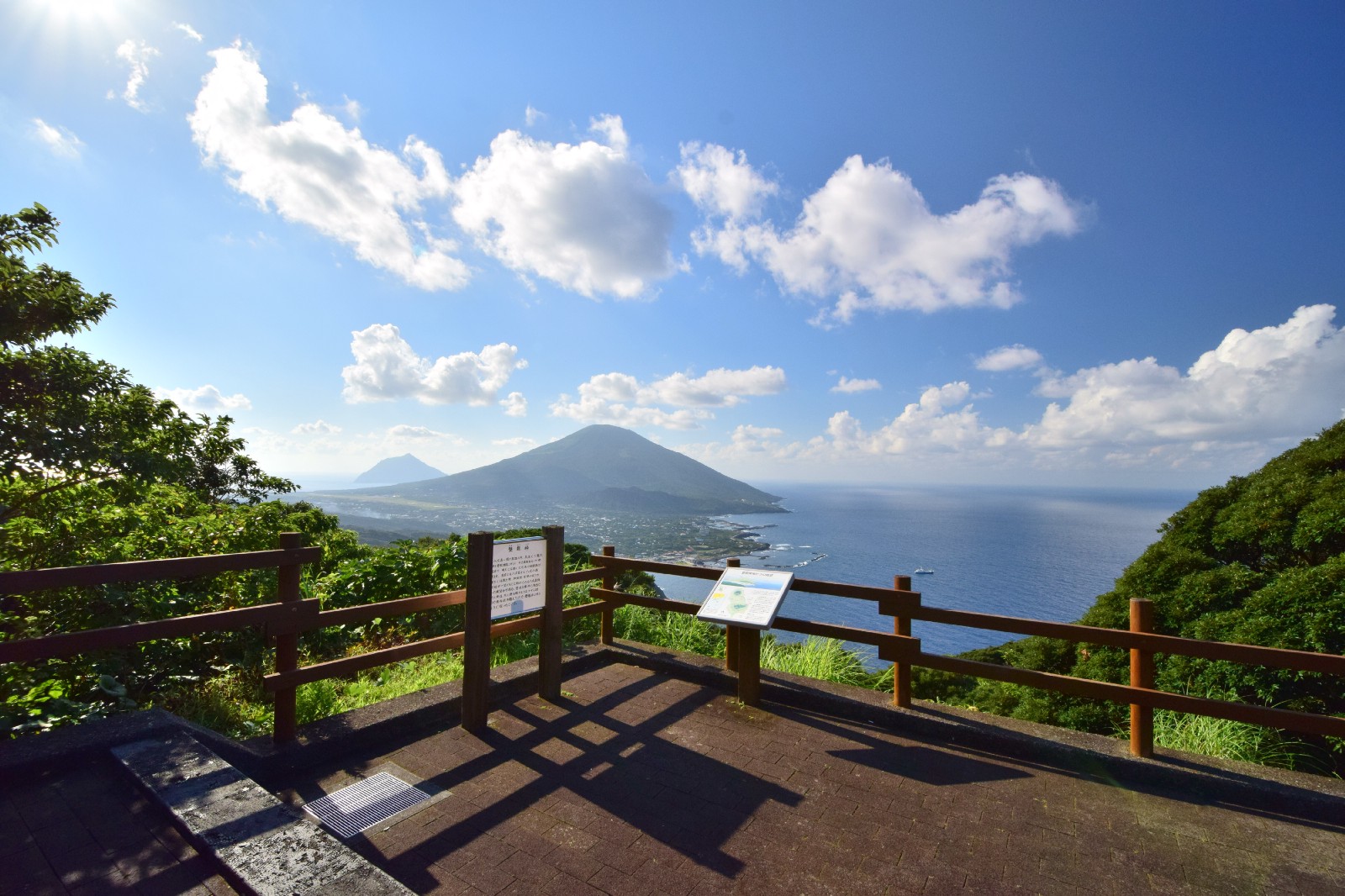
Secondly, I moved to the other spot Hachijojima Lighthouse (八丈島灯台) where you can take photos of the cool lighthouse against the blue of the sea. The third place named Nago Observatory (名古の展望台) is located just within only 5–6 mins from Hachijojima Lighthouse. The observatory with the view of the coastline and a little port is one of the perfect viewing spots in the island.
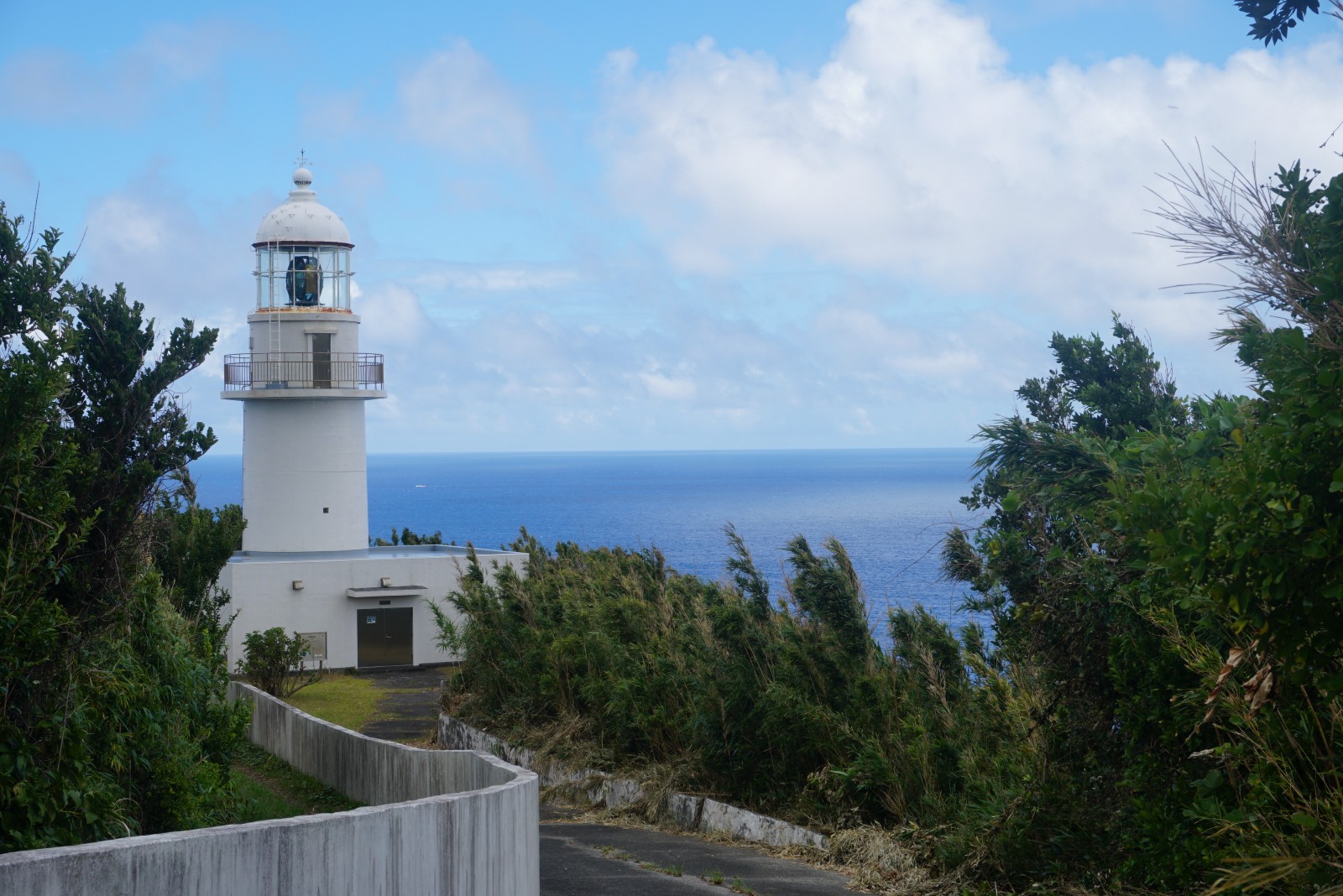
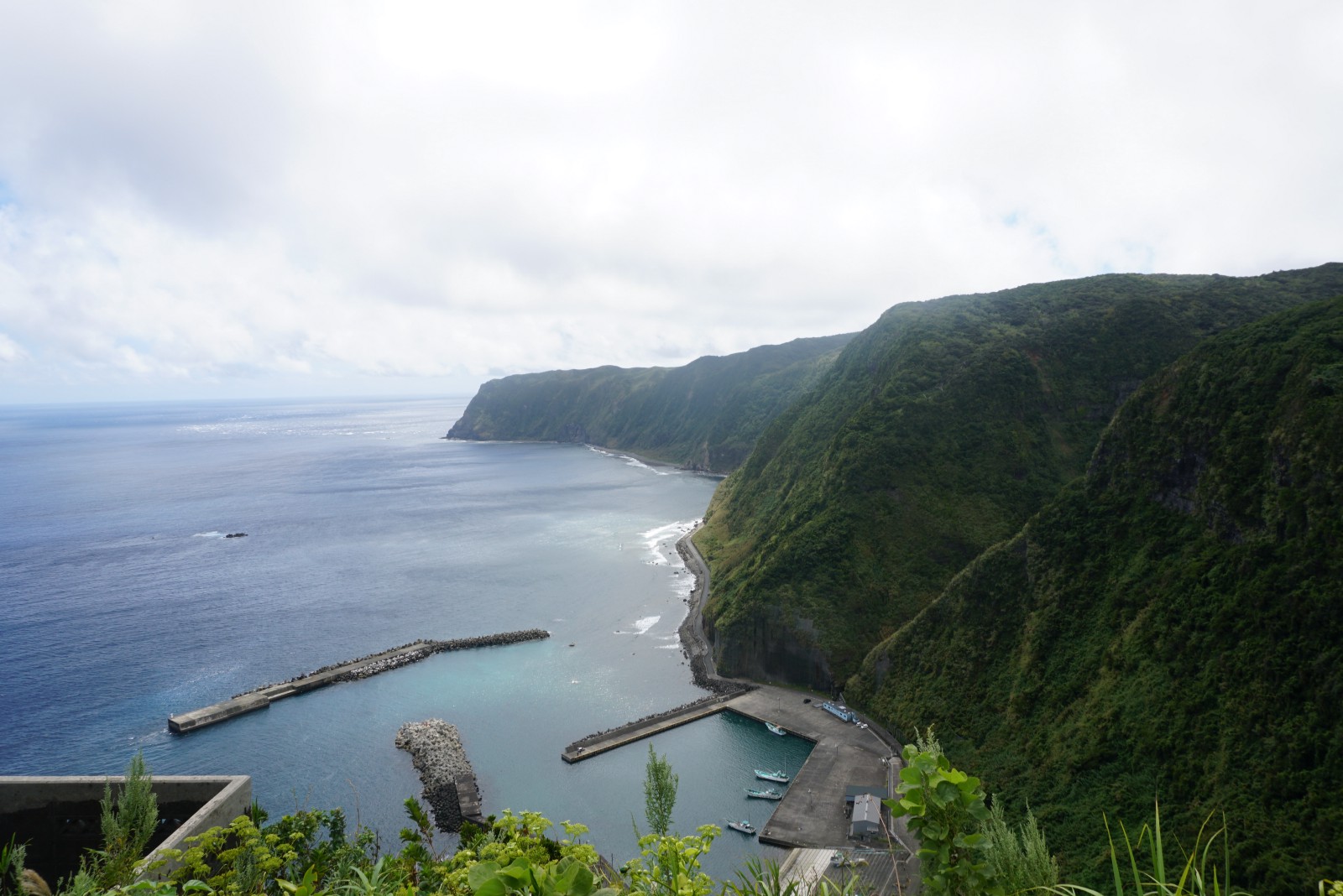
As my trip was reaching a final phase, I was driving back to the east of the island. For getting some souvenirs, I dropped by the souvenir shop in a Japanese traditional house Mingei-Aki (民芸あき) where almost all of the regional souvenirs are offered from Kihachijo (Hachijojima’s traditional craft with silk) to food and drinks.
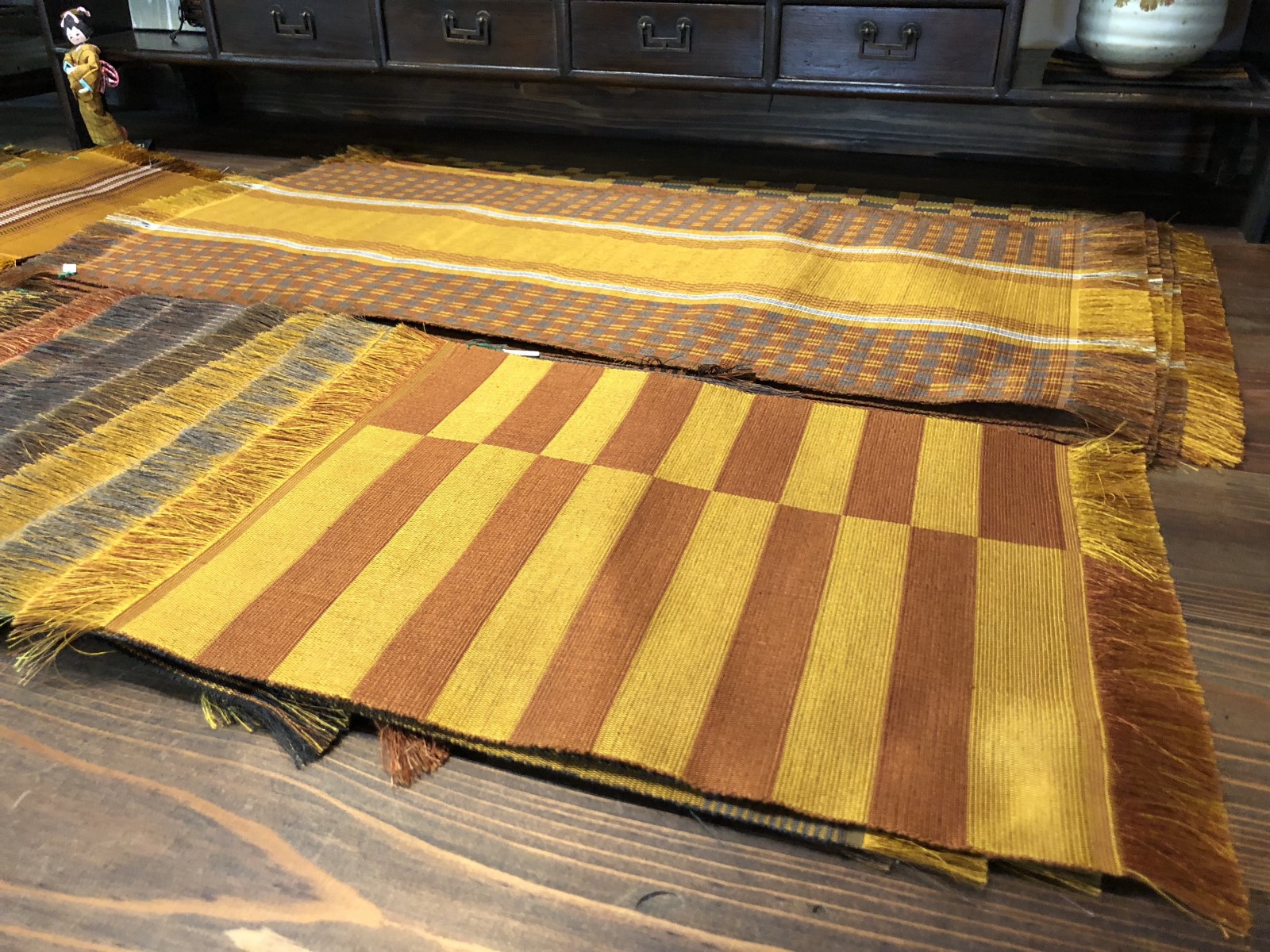
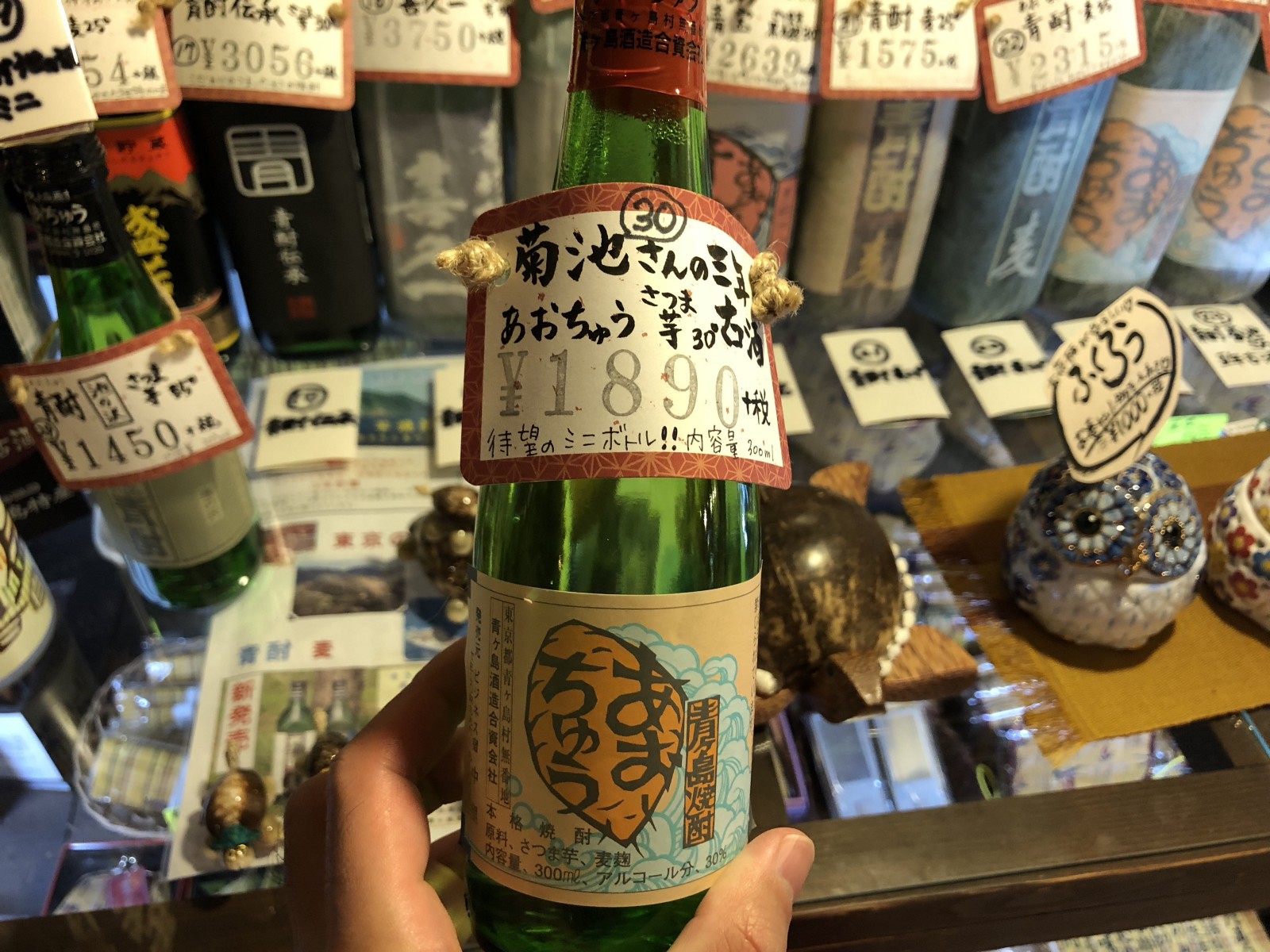
After shopping, I have some more time till my flight departs, so I took a break on the terrace at a cool cafe Pocket which is located near the airport. There are various drinks and American food like burgers and sandwiches.
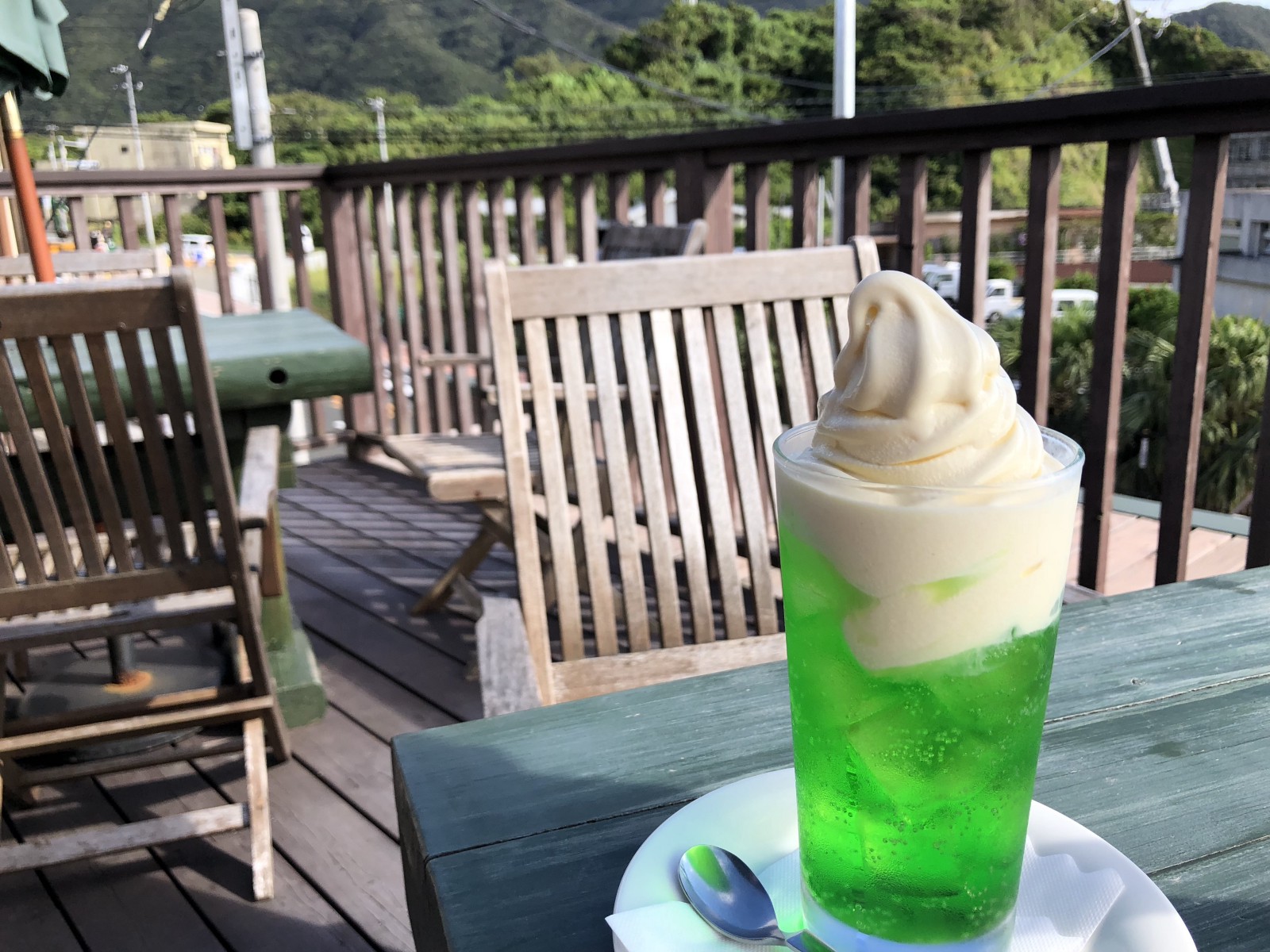
Finally, it’s time to leave the lovely volcanic island, and I returned the rental car. The rental car shop is really close to the airport, however, the staff there kindly drove me to Hachijojima Airport.
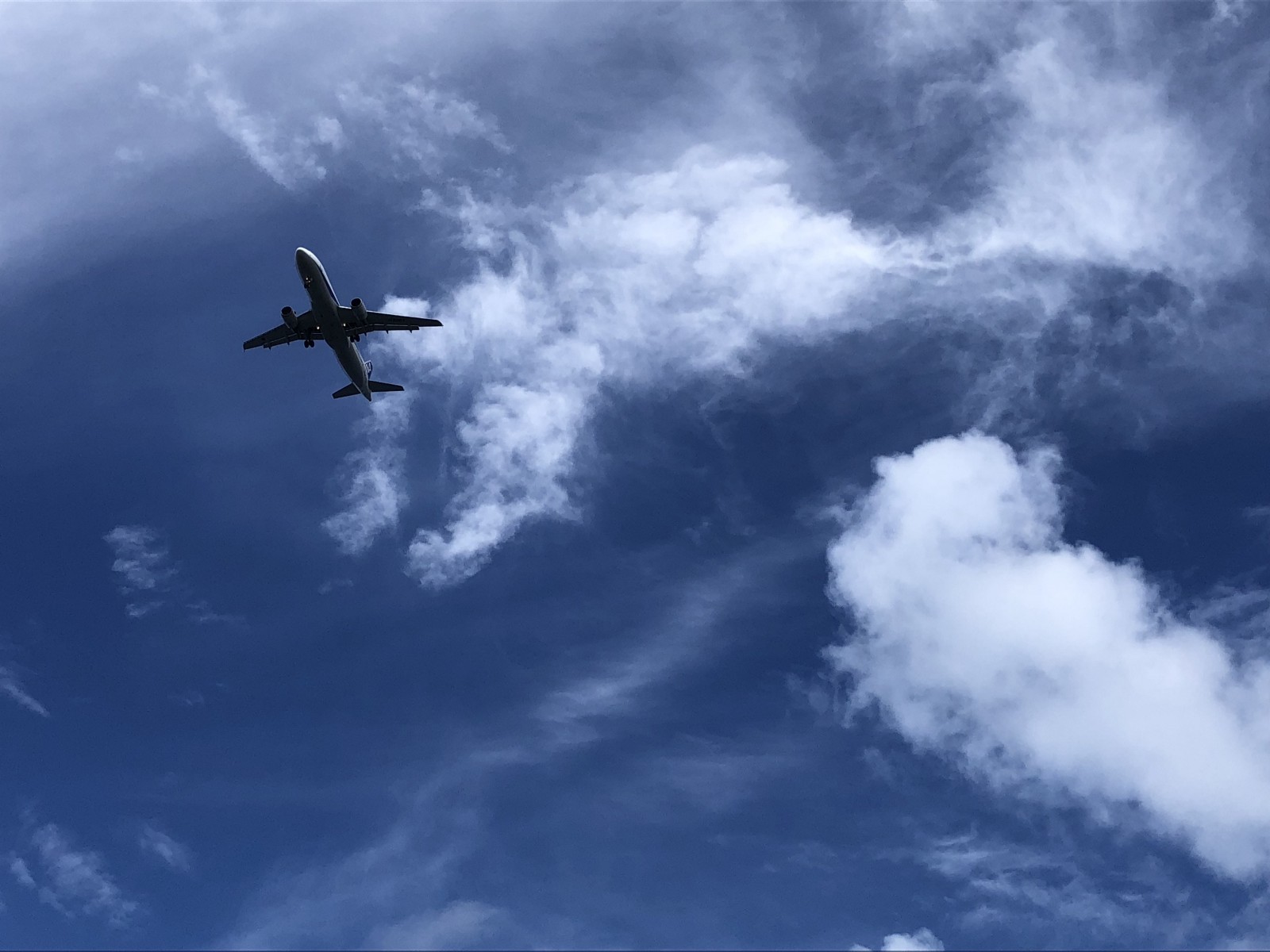
Honestly, Hachijojima Island has really attracted me with the untouched forest, exciting activities in the breathtaking sea, unique and delicious regional food and friendly local people. There is no question that the subtropical island is added in my top five islands so far.
I was not tired at all after the flight, since it took just 55 mins to get back to Tokyo. If you don’t have much time for resort trips, this is highly recommended to visit!! It is also a good idea to take a day trip to the island!
<<Want to check more activities in Hachijojima Island?>>
▽I also want to share my other travel experiences in Japan to you. Check these articles below.▽
For more information about traveling in Tokyo, you might also like these articles!
▼Editor’s Picks▼
Written by
I'm writing by my motto: helping travelers spend their limited time experiencing something priceless in Japan. My articles won't let you down! Living in Tokyo and traveling many popular and hidden sites all over Japan, I deliver well-selected and latest tourist information to you from the perspective of “100% Japanese local”. My specific interests are island hopping, eating countless bowls of ramen, watching anime and reading manga. Enjoy Japan Web Magazine for recommended food spots, hidden gems Japanese Otaku (geek) culture, and everything about Japan :)





